Posted by Powee Celdran
DISCLAIMER: Although this is mostly a work of fiction, it is largely based on true events and characters. It seeks to alter the course of actual events that transpired in the 8th century AD. This story will begin with events that happened in real history but will become fictional as it progresses. Also keep in mind that this story has some content that may be disturbing to some readers.
Previous Story: Byzantine Alternate History Chapter IV- 7th century
“Icon comes from the Greek word “eikon”, which means “images”, but in the Greek-speaking Roman world, before the advent of Christianity, eikon was usually used to describe portraits of humans.” -Leslie Brubaker, Inventing Byzantine Iconoclasm (2012)

Welcome to the 5th chapter of the Byzantine Alternate History series by the Byzantium Blogger! Last time, in chapter IV of this series, I went over the turbulent 7th century which saw the end of the early era of the Byzantine (Eastern Roman) Empire or Late Roman era and the beginning of its Dark Ages together with the sudden expansion of an unexpected empire, the Arab Caliphates, as well as the turbulent reign of the autocratic emperor Constans II (641-668). The 7th century was a major turning point for the Byzantines as here they had lost more than half of their imperial territories first to their long-time enemy, the Sassanid Persian Empire which the Byzantines managed to defeat but just shortly after it, the over exhausted Byzantines were to face the rise of an unexpected enemy from the south, the Arabs who would stop at nothing to conquer in the name of Islam, which for the Byzantines could have been their end. The Byzantine Empire still at least managed to survive the expansion of the Arabs but it had cost them a lot as a large portion of their imperial territories, most importantly the rich provinces of Egypt and Syria were forever lost to the Arabs while the Sassanid Empire on the other hand had completely fallen to the rule of the rising Arab Caliphate by the mid-7th century. It was in reign of Emperor Constans II when things began to totally change for the Byzantines, first in terms of territory as with a great loss of it, the Byzantines had to adapt to these changes by increasing military presence in order to check the expansion of the Arabs, thus leading to a reconstruction of the empire’s administrative system that included the creation of smaller military-controlled provinces known as Themes in Asia Minor (Turkey), which would become the empire’s new heartland. On the other hand, the 7th century had also seen the major shift of Byzantium in terms of language and culture from Latin to Greek, though despite this drastic shift from Latin to Greek, the Byzantine Empire still and would always remain the Roman Empire continued with its emperors still called “Emperor of the Romans”. In the previous story, I went with the possible what if scenario of Constans II actually relocating the Byzantine Empire’s capital to Syracuse in Sicily which he did in fact plan to do seeing that Constantinople was far too dangerous, and also if he survived the assassination attempt on him in 668 and living long enough to permanently divide Byzantium in half so that it would be much easier to protect and preserve for much longer. The previous story’s main topic on Constans II moving the capital to the west and dividing the empire in 2 parts between his sons with one based in Constantinople and the other one in Syracuse could have actually benefited the empire a lot, as having an emperor in the west could help restore Byzantine rule in Italy which by then had already been slipping away to the rising power of the Lombards, but also having the capital there could ensure the Byzantine reconquest of Egypt and North Africa from the Arabs. However, since the stories in this alternate history series are not continuous with each other, this story will go with the course of events in real history, therefore Constans II did die in 668 assassinated in his bath and his plan to move the capital west to Sicily never came to happen and from 674 to 678, Constantinople would be put under siege by the Arabs with Constans not being around to come to the aid of his son, the new emperor Constantine IV like what happened in the previous chapter, although the Byzantines happened to win this war in reality and weaken the Arabs for a time at least. What will continue though from the previous chapter will be the new “dystopian” condition the Byzantine Empire is at from being a world power like it was in the 6th century to now having to fight on the defensive for its survival against the endless rapid expansion of the Arabs where its people are now having to live in constant fear, which is why this dystopian-like period for Byzantium would be known as the “Byzantine Dark Ages” going on for over 2 centuries until the Byzantines would turn the tide of war against the Arabs from the defensive to the offensive. This new “Byzantine Dystopian” style for this alternate history series had started in the previous chapter as the Byzantine Dark Ages had begun and will continue on to this chapter where things will go at first from bad to worse until things will slowly get better again, and as the dystopian Byzantine world from the previous story will continue to this one- despite the alternate history outcome from last time not continuing here- a lot of the elements of the dystopian Byzantine world will return here including the political instability and usurpers, emperors with a dictatorial style of ruling, people resisting against the rule of the emperor to change society, an empire in a dangerous situation, constant war and economic crisis, the new dystopian-like Thematic System, and unimaginable new technology like the superweapon Greek Fire. This story will begin with a background on the real history of Byzantium in the late 7th century briefly covering the reigns of Constantine IV (668-685) and his son Justinian II (685-695), followed by a 22-year period of anarchy (695-717) which had seen a change of emperor 7 times and with all this instability, the Arab Umayyad Caliphate which had been weakened by the Byzantine victory of 678 would once again come back with a vengeance taking over Byzantine lands including Carthage ending Byzantine rule in North Africa once and for all. The year 717 then would be a very crucial moment as Byzantium which after 22 years of instability would face another siege on their capital, Constantinople by the Arabs but at the end, the Byzantines under their new emperor Leo III the Isaurian would win once more and slowly turn the tide of war against the Arabs. The siege of 717 would then be remembered as the “Battle for the Fate of Europe”- more than the Battle of Tours in 732 was- as if things went in favor of the Arabs, then the Byzantine Empire could have ended right at this moment, thus this would allow the Arabs to continue expanding deep into Europe, and now if not for the Byzantine victory here, most of Europe would have already fallen under Islamic rule and history as you know it would be totally different. It was then here in this battle where the Byzantine Empire and more particularly Constantinople would best be remembered as the wall that had protected Europe from the advance of Islam, in which Byzantium will prove to do just that many more times. This story will not yet end here and its what if scenario will also not be if the Byzantines lost and the Arabs won and how Europe would be different because of this, NO, instead it would continue further on into the reign of Leo III (717-741), the founder of the Isaurian Dynasty which shows an even more dystopian side to the history of the Byzantine Dark Ages mainly due to his anti-icon policies known as Iconoclasm or the breaking of religious icons (painted human images) that will shake and split the empire’s population and plant the seeds for its permanent split with the Western world or simply the “Great Schism”. This event in Byzantine history is one of its oddest in their 1,100-year history as the Byzantines being Orthodox Christians would surely be known to highly value their religious icons, but true enough there was a time when icons were outlawed as the emperor Leo III saw it as sinful therefore blaming all the empire’s setbacks against the Arabs on the overly excessive use and veneration of them. Now when it comes to doing a kind of dystopian style story set in the Byzantine Empire, the 8th century is a perfect time as like in all dystopian stories where a kind of autocratic government in charge outlaws something creating massive unrest and resistance, here in Byzantium the same can be said here when the imperial government had outlawed religious icons which therefore outraged half of the empire’s population while the other half supported it. This time in Byzantine history thus shows that an issue that may seem so small which here is about the use of icons could cause so much tension not only among the people of the empire but in the unity of the entire Christian Church as well. A little-known fact too is that something as small the banning of the use of icons by Emperor Leo III was a total major turning point in medieval history which would start the permanent schism between the Church of the east (Orthodox) and Church of the west (Catholic) and for the Byzantines, this was another period of great unrest despite having come out of a previous one, and once again another episode in the endless cancer of religious schisms in Byzantine history. The 7th century then was a major turning point as the Byzantines would for the first time face the expansion of the Arabs now having to fight on the defensive, while the 8th century where this chapter is set in features Byzantium at its lowest point, which would be another major turning point as it is here mainly due to Iconoclasm when the permanent schism both politically and culturally between Byzantium and Western Europe would start growing, turning into something like a centuries long “Cold War”. The period of Iconoclasm in the Byzantine Empire would not only be during Leo III’s reign, but would go on for over a century which totally deepened its divide with the Latin Catholic west, although this growing divide with the west could have been reversed if Iconoclasm could have ended earlier, and it surely did almost happen shortly after Leo III’s death in the year 742 when the Armenian Artavasdos, a loyal general of Leo III who helped him come to power in 717, who was however secretly against the Iconoclast policy usurped the throne from Leo III’s son Constantine V for the sake of ending Iconoclasm and restoring the use of icons, although in real history, the rebellion of the usurping emperor Artavasdos failed while the even more extremist Iconoclast Constantine V succeeded and would rule the empire for 3 more decades. Now the big question this story will tackle in its climax is that if Artavasdos’ rebellion succeeded thus restoring the use of icons much earlier on, would this lessen the chances for the permanent schism between Byzantium and the west and preserve Church unity?
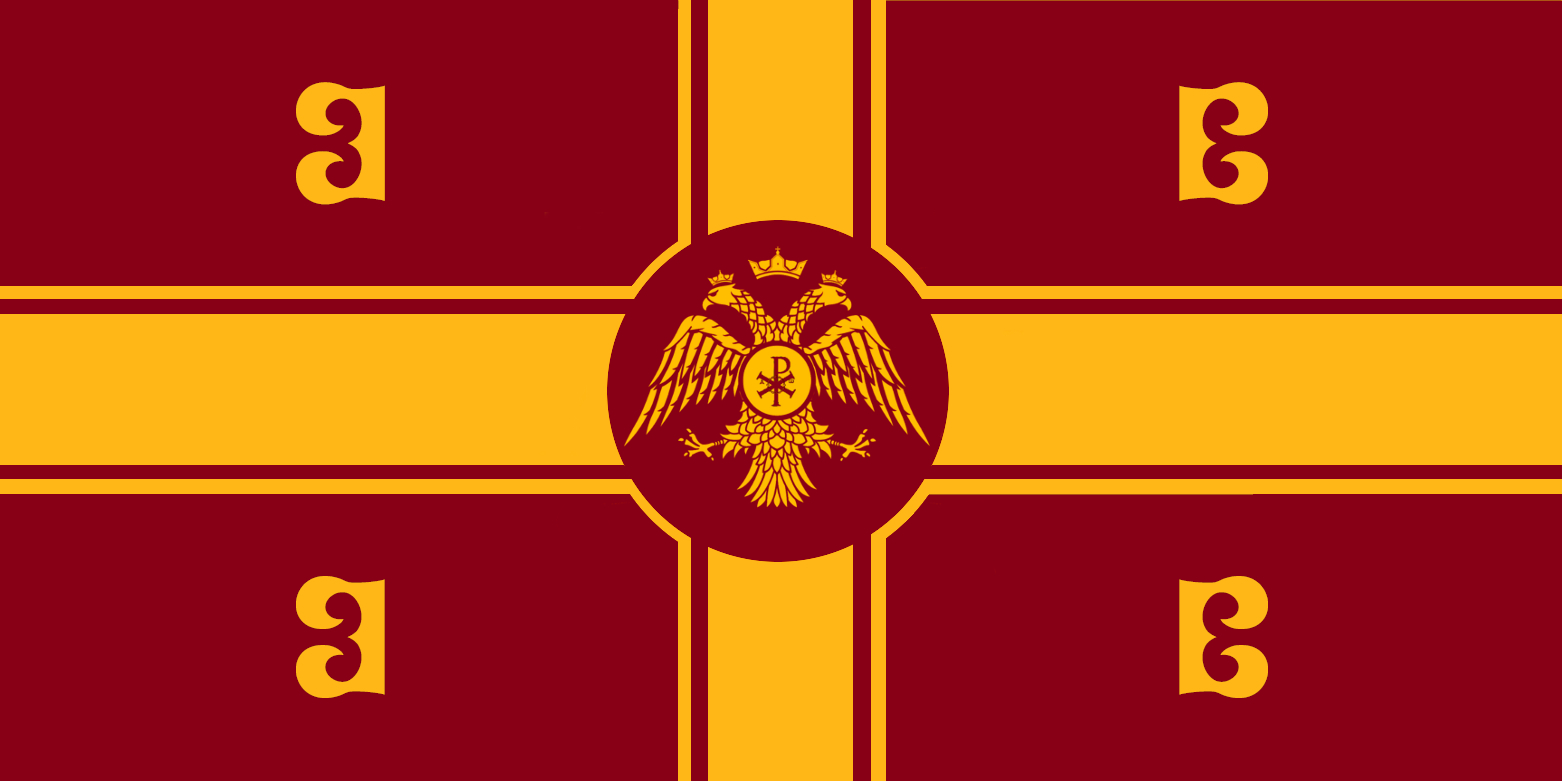
Follow me, the Byzantium Blogger on Social Media:
Instagram: @byzantine_time_traveller
Facebook: Byzantine Time Traveller
Youtube: No Budget Films
Twitter: @Byzantinetime
Deviantart: Byzantium-blogger55
Art Station: Powee Celdran Porphyrogennetos
Patreon: Byzantine Time Traveller
Note: Since this story is set in the 8th century after the fall of the Western Roman Empire, the Byzantine characters will be now referred to as Byzantines, not Romans.
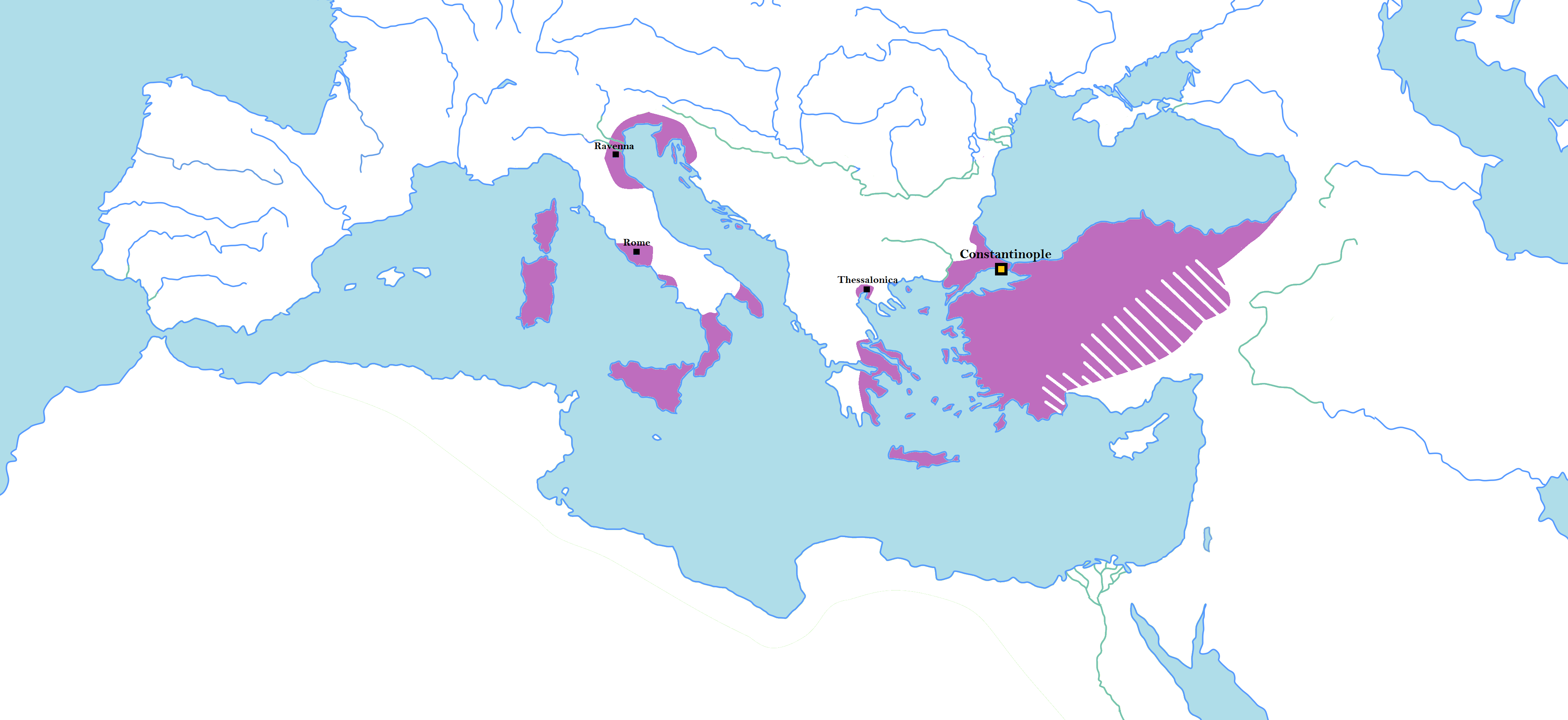
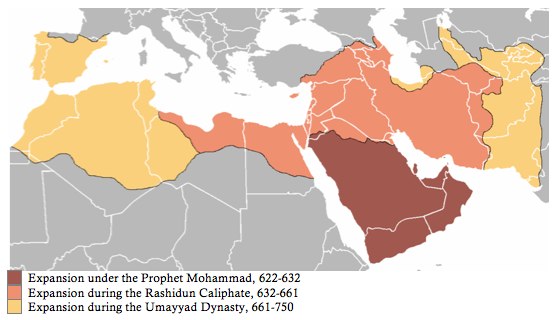
For this article, I am working in collaboration with Mario Puyat (follow him on Instagram @mariopuyatrewreplays and on Twitter @mario_puyat), a friend of mine who in this case helped me put this story together, thus making this story the second one in this series to be done in collaboration with someone (the last one being chapter III). In my previous special edition article wherein I interviewed 5 of my friends by having them react to quotes said by Byzantine era people, Mario happened to be one of these 5, and now he is returning for this article to give his take on Byzantine history despite not being so completely familiar with it. To give a quick background on Mario, he is a 22-year-old film student who plans to direct films and write movie scripts, while at the same time he is also a pop culture enthusiast being a big fan of the Star Wars, Marvel, and DC universes as well as of young adult dystopian stories, in which this story’s genre will somewhat be just that, except not so much the young adult type. On the other hand, when getting to know me, Mario had developed quite an interest in Byzantium as well and not to mention, he previously helped me in making my Lego Byzantine epics for my channel No Budget Films as a co-producer, as well as being a voice actor for a number of Lego Byzantine characters in my films, most notably the leading character Emperor Andronikos II Palaiologos from the 2020 Lego 13th century Byzantine epic War of the Sicilian Vespers. Though neither a historian nor a passionate Byzantine history enthusiast, Mario has a passion for writing stories, which is why I chose him to have a part in the creation of a chapter for this series, and this one here is the perfect one for someone like him to have a part in as this one I would say is something not so entirely Byzantine in the sense of being stuck in the past, but rather something more relatable to modern readers and pop culture enthusiasts, as it has quite a modern take on it being a dystopian style story with a bit of family drama, intimate romance, and lots of blood and gore. In this 12-part series, I on the other hand wanted to experiment as well by having someone who isn’t so entirely familiar with Byzantium’s take on Byzantine history as after all, I do want to make the rich and fascinating history of Byzantium more accessible to a wider variety of people and not only limited to scholars and historians, and part of this means experimenting with the history of Byzantium by making some kind of fan fiction out of it, which is exactly what I’m doing here. Though most of this story is basically me writing it, Mario’s part comes in when creating the personalities and actions of this story’s characters to fill in the blanks in parts where history does not record them such as these characters’ personalities and intentions, so therefore despite these characters being real ones, they had to be embellished a lot here for the sake of creating a full story considering that sources on the happenings of the 8th century in Byzantium are very limited. When creating this story, I also did some extensive research using more scholarly but fun sources online such as the Byzantine history Youtube channels Kings and Generals, Eastern Roman History, and Thersites the Historian, as well as no other than the highly comprehensive History of Byzantium Podcast by Robin Pierson.
Now when it comes to the dystopian genre of stories, many would immediately think of only modern ones most notably George Orwell’s 1984– which I was also a great fan of and made fan fictions of it too for my Youtube channel- or more recent novels like the Hunger Games and Divergent series, but as it turns out, the dystopian genre is not only limited to a modern or futuristic world setting, but can also go as far back as to the medieval era Byzantine Empire, especially if you are able to look closely into its history and use all your creativity. When it comes to the entire 1,100-year history of Byzantium from the 4th to 15th centuries, it is the 8th century’s story in which this article will be set in that I am least fascinated with due to the fact that it had more internal than external struggles, and not so much too was documented about this period which is therefore why it is also called the “Byzantine Dark Ages”, but when looking deeper into the story of this era, especially with the lack of information, it is the perfect time in Byzantine history to create a highly experimental fan fiction, which is basically this story here with Byzantium under the Isaurian Dynasty. Of course, to set the stage for this story, the same thing will go as in the previous stories of this series beginning off with a historical background to it which will discuss the events that led to the dystopian setting of Leo III’s Byzantium beginning where the previous chapter left off as we leave the early Byzantine era and enter the middle part of it, then giving a background to the leading characters such as the madman emperor Justinian II and afterwards Leo III the Isaurian who originally was Konon, a Syrian shepherd of Isaurian origins with an Eastern influenced mind together with the Armenian Artavasdos as well who helped him come to power, then we proceed to the beginning of Leo III’s reign with the epic battle of the 717-718 Siege of Constantinople where the Byzantines again come out victorious. The dystopian genre of the story then comes in at the part on Leo III’s reign (717-741) especially when the ban on icons is imposed and how the people of empire would react to it.
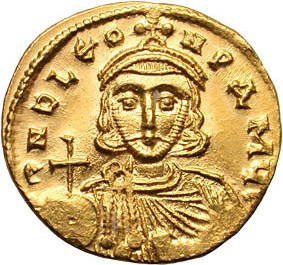
Basically, a dystopian story features the world under the rule of a totalitarian government which envisions a bright future, but really everything in society just goes wrong and the 8th century Byzantine Empire of Leo III is no exception to this kind of setting. As usual in dystopian stories where some kind of freedom to do something is banned by the government, here in this story it would be exactly the same case as in real history where the use of religious icons were banned, therefore icons were confiscated from anyone and everyone that owned them and either destroyed or burned, and again like most dystopian stories which feature a kind of dictator that runs the totalitarian government just like Big Brother in 1984, for this story, the totalitarian state supreme leader character would be Emperor Leo III, the author of the Iconoclast movement and after his death in 741, his son the even more Iconoclast extremist or simply the “Icon of Iconoclasm” Constantine V, wherein the climax of the story takes place in. Most dystopian epic stories too feature a protagonist who is destined to rise up and overthrow the system, and for this story, it will be the historical figure the Armenian-Byzantine general Artavasdos who in reality from 742 to 743 usurped the throne from Constantine V in the name of restoring the use of religious icons. This story then will have the very much unknown Byzantine emperor Artavasdos as its lead character who was in fact the person that helped Leo III come to power, and later as Leo III’s right-hand-man was married to Leo III’s daughter Anna which is surely what also gave him a claim to the throne in 742. Now many, even those who are very familiar with Byzantium may not really know much about this usurper Artavasdos or if they do, they would just remember him as an unsuccessful usurper who never had anything important to do with real history, but when getting to know him and his plans more, you would definitely find out that he could have in fact played a crucial role in Byzantine history by reversing the repressive movement of Iconoclasm before it would grow even stronger if he was able to survive and not be defeated and blinded by Constantine V in 743. As the lead character of this story, the 55-year-old Artavasdos in 742 would be a reluctant hero who is secretly against Leo III’s Iconoclast policy but is afraid to show it as he was also loyal to his father-in-law Leo III who he helped come to power in 717, but following Leo III’s death, he would have to rise up for the good of Byzantium or at least for those who value icons and their beliefs, also because he had some personal reasons to rebel which was mainly his envy and hatred for Leo III’s son Constantine V who he felt betrayed by as Artavasdos before Constantine V’s birth was promised the throne by Leo III. For this story too, there will however be no fictional character made up for it, instead with the help of Mario, I will somewhat fictionalize these historical characters in terms of personality as history true enough does not describe what these characters’ personalities were like. The 3 leading characters who’s personalities and backstories will be created in a fictionalized way for this story will include the general and soon-to-be emperor Artavasdos who in Mario’s take in creating the story would be the emperor’s loyal general but is deeply troubled by the emperor (Leo III) having a son; Constantine V who is Leo III’s son and heir being something like a smart but somewhat odd and insane, immature, arrogant, decadent, and bloodthirsty young ruler with an addiction to pleasure who believes he is always right and is a blind believer of everything his father says most especially Iconoclasm making him someone more likely to hate than like; and lastly Leo III’s daughter Anna who is Constantine V’s older sister and Artavasdos’ wife who here for this story would be an intellectual and artistic woman who behind her father’s and brother’s back is the leader of the resistance against Iconoclasm who in personality is nice and calm but becomes cruel and ambitious in order to protect the interests of her family, as she is also abused by her brother who had envied her too. On the other hand, the much better-known emperor Leo III or Konon too will play a major role here in the story’s first two-thirds and although contemporary historians who wrote about him, most notably Theophanes the Confessor (758-817) who strongly opposed Iconoclasm portrays him as a total villain, here in this story Leo III’s portrayal would be more unbiased as both the talented and cunning savior emperor saving Byzantium from its ultimate extinction at the hands of the Arabs and restoring stability following the 22-year period of Anarchy despite being of low birth, but also would later on be a villainous ruler for his declaration of the banning of icons plainly for superstitious reasons which resulted in thousands of valuable icons destroyed and the human rights of those who venerate and create them violated, whereas some even died for the sake of freely venerating icons. The big twist here will be on Artavasdos who for the most part would be Leo III’s right-hand-man strongly enforcing Iconoclasm in the empire with Leo III still alive, though after the death of Leo, he has a big shift in character when betraying Constantine V in 742, suddenly becoming a strong fighter against imperial Iconoclasm and a symbol for those who believed in the icons, even if his main reason to usurp power was his personal hatred for Constantine V. This story too will focus more deeply on the issues in the Byzantine Empire’s Dark Ages in the 8th century showing how Byzantium is no longer like it was in the Golden Age of Justinian I in the 6th century (as seen in chapter III), most especially with the empire at its lowest point of power and the internal war against icons tearing the empire apart whereas Iconoclasm would be popular with many most especially soldiers and those from the eastern provinces while many, most especially those in the western provinces and women strongly opposed it. Therefore, this story will not focus too much on the external wars of Byzantium in which they also had a lot of at this time not only against the Arabs but against a new enemy too being the Bulgars in the north; instead, it would be something more on the society of Byzantium and of course the constant burden of religious debates that Byzantium became famous for. Also keep in mind that this story will have a lot of mature content such as blood and gore, disturbing moments, language, nudity to a certain extent, and a lot more.
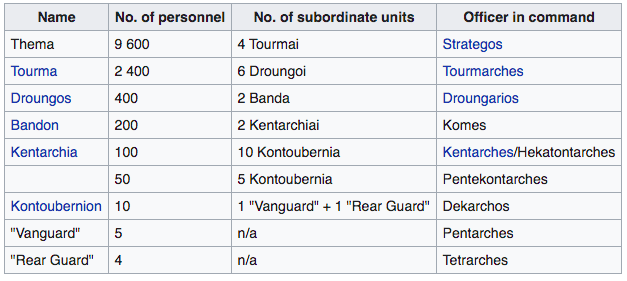

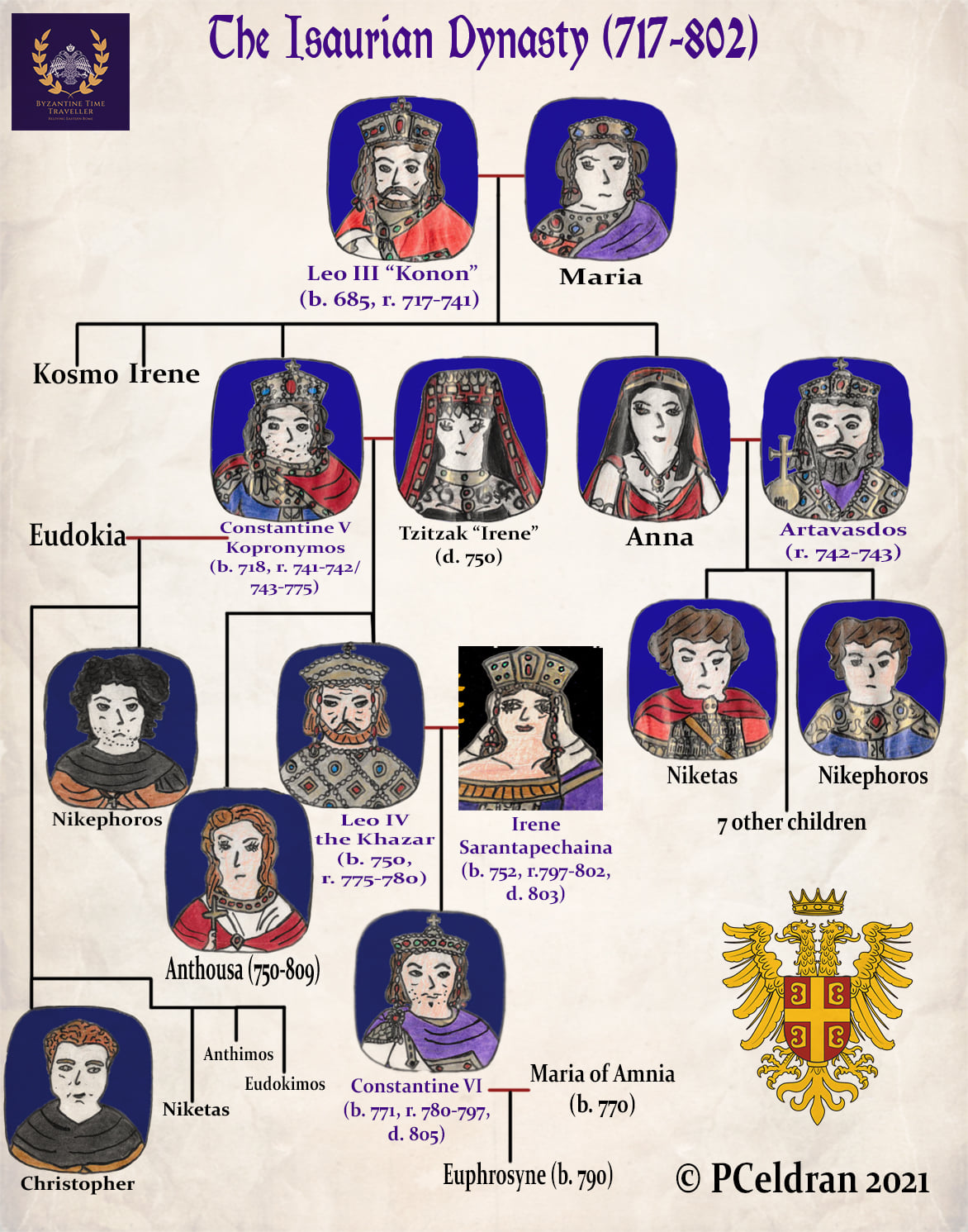
Related Articles from The Byzantium Blogger:
Byzantine Alternate History Chapter IV- Constans II Relocates the Imperial Capital to Sicily
Byzantine History for Everyday People- Reactions to Quotes from Byzantium
Around the World in the Byzantine era- Part I (300-1000)
12 Turning Points in Byzantine History
The Art of War in the Byzantine World
A Guide to the Themes of the Byzantine Empire
Lesser Known and Would be Byzantine emperors (695-1453)
Natural Disasters in Byzantine History
Related Videos to this era:
The 22-Year-Anarchy (Eastern Roman History)
The Arab Siege of Constantinople, 717-718 (Kings and Generals)
The Byzantine Empire’s Themes and Thematic Army (Kings and Generals)
The Leading Characters:
Leo III the Isaurian (aka. Konon)- Byzantine emperor (717-741)
Artavasdos- Leo III’s imperial partner and Byzantine general, Strategos of the Armeniac Theme
Anna- Wife of Artavasdos, daughter of Leo III, leader of the resistance against Iconoclasm
Constantine V Kopronymos- Son and successor of Leo III
Anastasios- Iconoclast Patriarch of Constantinople
Niketas- Byzantine general, son of Artavasdos and Anna
Nikephoros- Son of Artavasdos and Anna
Tzitzak- Khazar wife of Constantine V
Maria- Byzantine empress, wife of Leo III, mother of Anna and Constantine V
Eutychius- The last Byzantine Exarch of Ravenna
(Credits to Ediacar, Amelianvs, Faisal-Hashemi, Krzysztof Pyzik, Androklos, and Chrysa Sakel for their art on this era which are featured here.)
Funko pop versions of the 3 leading characters of the story created by myself- Artavasdos, Anna, and Constantine V:
The Background- The Themes, Justinian II and the 22-Year Anarchy (695-717)

Since the 630s, the Byzantine Empire had lost a great amount of territory, most notably the rich provinces of the Levant (Syria and Palestine) to the sudden expansion of a new enemy, the Arab Rashidun Caliphate or simply the Islamic Empire from the deserts of Arabia in the south. The Byzantines never expected the people from the deserts of Arabia to be such a threat until the unexpected happened for Byzantium when the people of Arabia all united under the new faith of Islam, and their unity combined with their ability to travel across deserts with such great speed turned the Arabs from scattered tribes in the desert to a world power in an instant. In only about 20 years since the birth of Islam, the Arabs had now controlled much of the Middle East as well as Egypt which they had conquered from the Byzantine Empire and by 651, the Arabs had completely conquered all of Persia destroying the Byzantine Empire’s traditional mortal enemy, the Sassanid Empire, thus the Arab Caliphate had now replaced the Sassanids as Byzantium’s eastern mortal enemy.

Meanwhile, as the Byzantines lost most of their eastern provinces mainly Egypt and Syria, Asia Minor became its new heartland while the Taurus Mountains in Eastern Asia Minor would be its natural barrier against the expansion of the Arabs, although the Arabs were creative that when knowing they were unable to cross the Taurus Mountains into the Byzantine heartland, they soon enough began constructing their own navy after taking the ports of Syria and from there, they would begin attacking Byzantium by sea. By the 7th century, Byzantine territory had drastically shrunk not only because of the expansion of the Arabs but with the loss of almost the entire Balkans (Southeast Europe) to a number of external enemies mainly the Slavs, and this was a devastating loss as the Balkans played a major role as the recruitment center for soldiers in the Byzantine army. In the mid-7th century, the Byzantines still at least had control over half of Italy as the other half fell to a new enemy being the Lombards, and some of Byzantine North Africa too fell to the Arabs; though these remote parts of the empire being Italy and North Africa were not under the direct rule of the emperor but of a semi-autonomous governor known as the Exarch who answered directly to the emperor and there were two of them controlling their own Exarchates, the two being the Exarchate of Ravenna that controlled Byzantine Italy from Ravenna and the Exarchate of Africa that controlled North Africa from Carthage. Now with the Byzantine Empire so heavily reduced in size and population and the new heartland now being Asia Minor, the emperor Constans II (r. 641-668) saw the need to reorganize the empire’s administrative and military structure more particularly in Asia Minor, thus leading to the creation of the Thematic System or Themes between 659 and 661, which were to be smaller military-controlled districts named after their respective armies that controlled them.

Basically, in these new shrunken provinces or Themes, each of them had a mobile army assigned to it while recruitment was done locally per Theme to increase the number of soldiers, while all young men too living in these Themes were encouraged to join the army in exchange for land given to them, to also ensure their full loyalty to the empire. Each of these Themes were under a general called a Strategos who was both the top commander of the Theme’s army and its provincial governor, and each of the Themes was to provide both soldiers and resources for the empire. The main purpose though for the Themes was more in terms of military matters as when the eastern border would be under attack, the army stationed in that Theme near there would immediately come to the rescue of the border, while on the other hand when another part of the empire would be under attack, the emperor could simply have another Theme’s army come over to that part, which therefore was a smarter defence method rather than how things were before when an entire army had to march from one end of the empire to the other when a war broke out. The first 5 Themes created under Constans II were all in Asia Minor and these were the Anatolic (Anatolikon) Theme found in Central Asia Minor, the Armeniac (Armeniakon) Theme which was the largest of the Themes found in Eastern Asia Minor next to the border with the Arab world, the Thracesian (Thrakesion) Theme in the western coast of Asia Minor, the Opsikion Theme in Northwest Asia Minor right across the sea from Constantinople which consisted of the empire’s most elite army which however will soon enough prove to be the most troublesome of the armies later on, and lastly was the Karabasian (Kibyrrhaioton) Theme in the southern coast of Asia Minor which was basically the one controlled by the navy. While the Themes were being created, the Arab Caliphate entered its first civil war or the First Fitnah (656-661) which gave the Byzantines time to recover but as the civil war ended 661, the Arab Rashidun Caliphate being destroyed was replaced by the new Umayyad Caliphate under Caliph Muawiyah I who made the Caliphate now based in Damascus in Syria into a more organized state and as the first Umayyad caliph or emperor, he was fully intent in taking over Constantinople. Knowing that Constantinople was too dangerous in location, Constans II in 662 left it for good later finding himself in Sicily where he planned to make the city of Syracuse there as his new capital as it was also part of his plan to launch the Byzantine reconquest of Egypt and restore Byzantine imperial presence in the west but in 668, he was assassinated in his bath by a servant using a soap dish, thus his plan to both relocate the capital west and take back Egypt failed.




Following the death of Constans II in 668, Caliph Muawiyah I using his fleet took over some of the Byzantine ports of Asia Minor launching the first Arab Siege of Constantinople in 674, although this was not really a major attack but a series of intermittent skirmishes on Constantinople by the Arab army and fleet and up until 677, the siege was not coming into any results until the young emperor Constantine IV (r. 668-685), the son of Constans II counter-attacked the Arab fleet head-on using the secret superweapon Greek Fire for the first time totally obliterating the Arab fleet and army.

In 678, the Arabs fled Constantinople and the Byzantines, thanks to Greek Fire emerged victorious while Muawiyah later signed a truce with the Byzantines agreeing to pay them annual tribute and return to them the islands and ports they previously captured from them. Following the death of Caliph Muawiyah in 680, the Arab world again fell into civil war which here was the Second Fitnah going on for the next 12 years, thus giving Byzantium some relief and time to recover after all the damage the Arabs had inflicted on them. Meanwhile, despite Byzantium for now saved from the threat of the Arabs, another new enemy would come for them from the north which was that of the Nomadic Bulgars from the Steppes near the Volga River in today’s Russia as when losing a war to the Nomadic Khazar people of the area, the Bulgars were forced to migrate south to lands they could settle in, and the only available land for them was Byzantine Thrace (Southeast Europe). Leading the migration of the Bulgar hordes into the Balkans in 680 was their ruler or Khan Asparukh, and with the eastern borders of Byzantium secured, considering the Arabs were again in conflict with each other, Emperor Constantine IV summoned the armies of all the 5 Themes to confront the Bulgars in battle at the empire’s northern border, the Danube Delta, where the Bulgar army led by Asparukh had already assembled at.

After assembling the Byzantine army at the Danube Delta, Constantine IV had to rush back to Constantinople after falling ill, although he also had more important matters to attend to, which here was the 6th Church Council wherein at the end, he succeeded at declaring the religious controversy of Monothelitism which his father stood for as a heresy and reaffirming the Orthodox belief in the natures of Christ. Meanwhile with the emperor not present in battle, the Byzantine army panicked and were thus defeated by the Bulgars here at the Battle of Ongal in 680, and as a result Constantine IV in 681 had to cede Northern Thrace to Asparukh acknowledging the birth of the Bulgarian state there which would therefore become Bulgaria, and it is true enough where today’s Bulgaria is too. From here on, the Bulgarian state was born and there to stay which would later be both a valuable ally and brutal enemy to the Byzantines at different times as you will see later, and Constantine IV despite losing Northern Thrace to the Bulgars still remained popular as at quite a young age he solved a difficult religious controversy and successfully defended Constantinople from the Arabs earlier on, while at this time he would also create the new Theme of Thrace to further protect Constantinople from the nearby Bulgars that were just to the north. In 685, Constantine IV died at only 33 from dysentery later becoming an Orthodox saint for his achievement in solving the Monothelite Controversy, and following his death he was succeeded by his 16-year-old son Justinian II (born 669) who as the new emperor was very ambitious wanting to live up to the emperor he was named after, Justinian I the Great (r. 527-565), Byzantium’s most influential ruler so far, although Justinian II did not have what Justinian I had being the vast amount of wealth to carry out such ambitious conquests and building projects considering that the Byzantium of Justinian II was weakened and exhausted compared to the powerful Byzantium Justinian I inherited back in 527.

It also happened here in 685 over in Byzantine Syria at the town of Germanikeia (today’s Kahramanmaras, Turkey) where a boy named Konon who would later be emperor was born to a simple family of Syrian and Isaurian origins as an only child and from a young age, Konon would develop the ability to speak the Arabic language together with his native Greek as his name suggests, but at the same time he could understand the culture and mind of the Arabs due to the fact that living close to the border of the Arab Caliphate, he was exposed to Arab people who came to his town to trade and from them, he learned everything about their culture. The one thing about the beliefs of the Arabs that intrigued Konon most was how they disapproved worshiping God through icons or the form of a human image as it was strictly forbidden for the Arabs as Muslims to worship God that way considering it as idolatry and as a Christian, Konon thought this was true enough the right way to worship God. Another factor that had influenced Konon’s stance against icons too which will be shown in his time as emperor later on was that coming from the east, most people there were Monophysite Christians, those who believed Jesus Christ was fully divine and not human, therefore as God it was not right to have an image of him, unlike the Orthodox Christians of the western parts like Constantinople who worshiped Christ as God with images. On the other hand in the Armeniac Theme in 687, the person who will later help Konon come to power, Artavasdos was born, although history does not record his date and place of birth and family background except that he was a Byzantine-Armenian known as Artavazd in Armenian with “Artavasdos” as his name’s Greek translation, so for this story it will just be made up that he was born in the Armeniac Theme (Northeast Asia Minor) considering he was an Armenian and would be 2 years younger than Konon, and for this story Artavasdos is someone from a prominent military family.
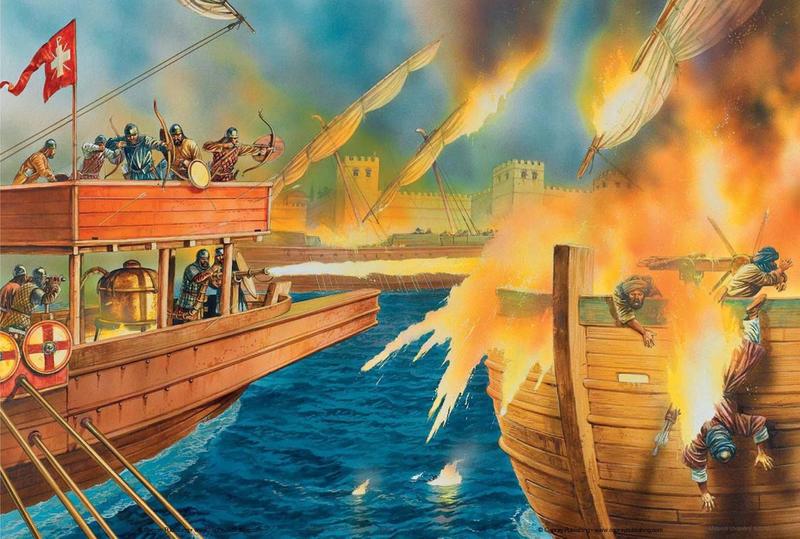
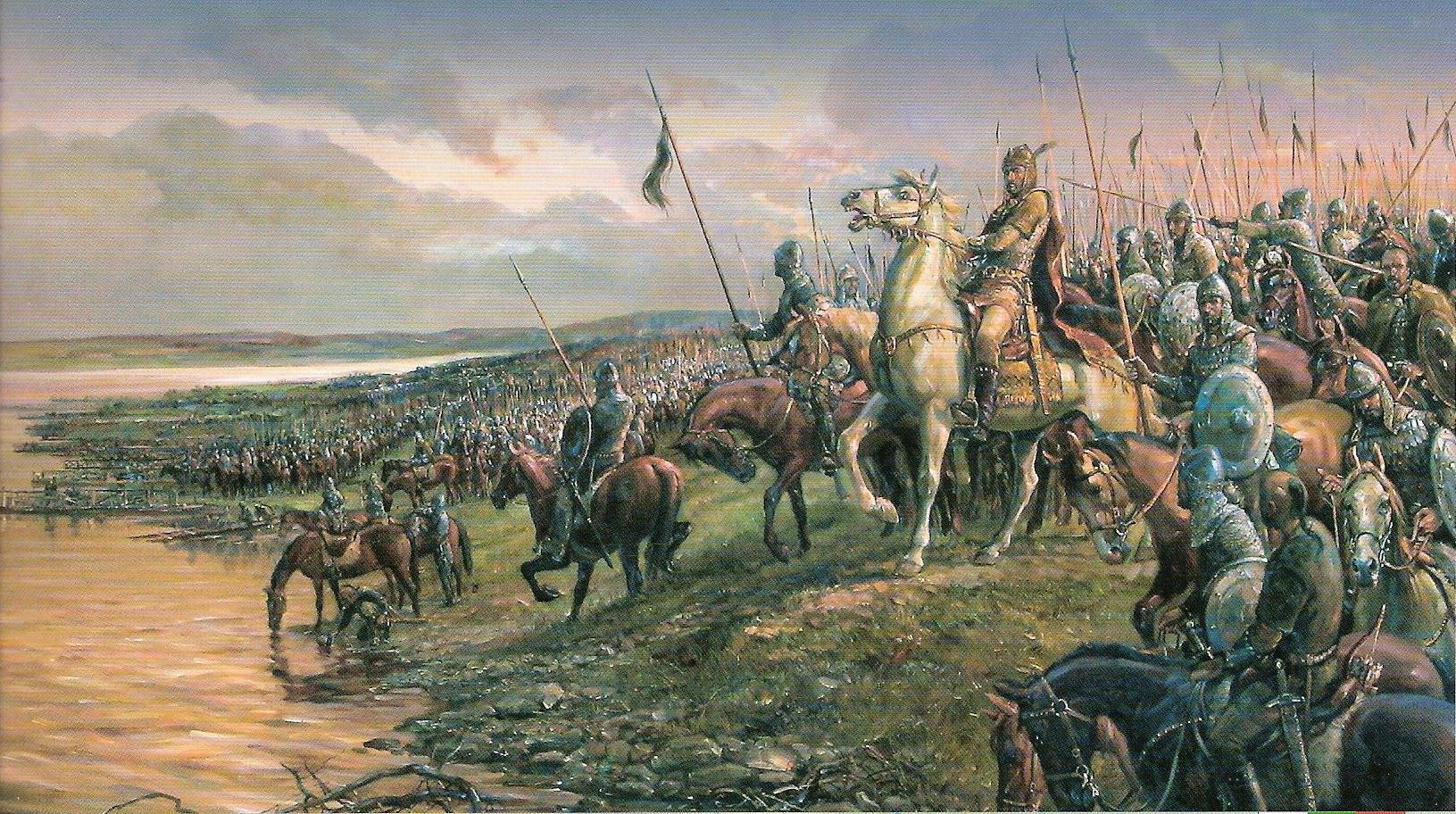
Meanwhile back to Justinian II, he came to power with a great amount of luck as he was from the 5th generation of the unbroken Heraclian Dynasty founded by his great-great-grandfather Emperor Heraclius (r. 610-641), showing here for the first time in Byzantine history, and in fact in all of Roman history that a dynasty ruled on for 5 generations in one straight hereditary line from father to son, but little did Justinian know he would be the last of his dynasty. The young emperor was deeply ambitious and a religious fanatic as well believing that it was his destiny to defeat the Arabs once and for all in the name of Christianity, and considering the Arabs were still in conflict with each other, Justinian II’s armies successfully attacked the Arabs in Armenia and Syria thus retaking some lands the Byzantines lost and with the Arabs defeated, the new Umayyad caliph here Abd al-Malik (r. 685-705) in 688 agreed to pay tribute to Byzantium.
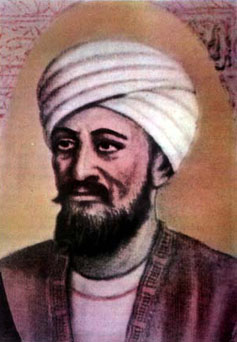
Afterwards, Justinian II focused his attention on the Balkans to deal with the Slavs and take back the lands Byzantium lost to them, wherein Justinian himself personally led his men in battle and at the end, he managed to succeed in defeating the Slavs while the Slavs that survived were forced to relocate to Asia Minor to repopulate it and provide more troops, as the previous wars against the Arabs there killed many. Justinian II would also put the Themes his grandfather Constans II created into full effect and this meant resettling people from across the empire into them in order to balance each Theme’s population, but another reason for him doing this was to limit people of the same race (e.g., Slavs) in one Theme as having too much of one race in a certain area would lead to rebellion, and the Slavs being seen as a rebellious people by Justinian II were moved to Asia Minor, while the Mardaites who were mostly Monosphysite Christians and seen as troublemakers as well living in Southern and Eastern Asia Minor were relocated by Justinian II to the Balkans, and this would be when Konon and his family were relocated from Byzantine Syria to Thrace, though it is not clear when this happened, but for this story’s case it would be in 695 before Justinian II was deposed. Now before Justinian II was deposed, as a fanatically religious ruler, he was the first emperor to put the image of Christ in the coins used around the empire, and part of his imperial policy too was to crack down on the last remnants of Pagan practices, meaning putting a ban on playing games such as Dice and Tabula in public as he saw it as Pagan in origins, thus this started making him extremely unpopular.

Justinian II too was not only unpopular for being puritanical in his policies, but strongly unpopular with the rich as he increased taxes on them as well as having rich tax evaders imprisoned and tortured and instead, he favored small landowners and farmers. In 692, the Second Fitnah had ended with Caliph Abd al-Malik victorious and the Umayyad Dynasty still ruling the Caliphate, though the caliph was extremely outraged seeing Byzantine coins with Christ’s image on them as again the Arabs being Muslims strongly opposed the idea of seeing God as a human so in retaliation against Justinian II, Abd al-Malik had Islamic art put on the papyrus scrolls the Byzantines imported from Arab Egypt and due to this as well as the Arabs imitating Byzantine art by putting mosaics in their capital Damascus further enraged Justinian II making him declare war on the Arabs. The peace between the Umayyad Caliphate and the Byzantines then ended right here in 692 when both forces confronted each other at the Battle of Sebastopolis in Southern Asia Minor where the Slavic warriors Justinian had resettled into Asia Minor for the first time fought in the Byzantine army but at the middle of the battle, the 20,000 Slavs for unclear reasons- although most possibly because they were never loyal to Byzantium and were forced to fight for them- defected to the Arabs and at the end, the Byzantines suffered a heavy defeat. As a result of this defeat, Justinian II had the man responsible for it, the young leading Isaurian general Leontios the Strategos of the Anatolic Theme imprisoned, and it was also here when Justinian II would show how much of a madman he was when he had the families of the defected Slavic warriors in the Opsikion Theme massacred leaving no one alive not even the women and children according to the historian Theophanes the Confessor (758-817), who although portrays Justinian II as a madman, which is true for this story. Justinian II would later on become even more unpopular for his autocratic style of ruling which he inherited from both his father Constantine IV and grandfather Constans II as shown when he summoned a Church Council in 692 also known as the Quinisext Council, in which out of his own orders demanded that all Churches including the west which was basically the Church of Rome under the pope to use Eastern practices in their liturgy like the use of the Greek language, and this surely offended the pope making this one of the first steps that began the split of the Eastern and Western Churches.

Another thing that would make Justinian II be labelled as a madman was how he used the taxes he brutally extracted from rich taxpayers to expand the Imperial Palace complex in Constantinople by expanding the garden and constructing a new dining hall as a way to imitate Justinian I’s ambitious construction projects, but in the process of this as Justinian II built a new fountain in the palace, a church had to be destroyed, which also turned the Church against him. In 695, Justinian II released Leontios from prison after 3 years making him the Strategos of the newly created Theme of Hellas (Western Greece), but this here would be the downfall of Justinian II as when Leontios was assigned to Hellas, the population there mostly being rich landowners rose up under him naming him emperor against Justinian II. When arriving in Constantinople with the army of the Hellas Theme, Leontios was then backed by the Patriarch of Constantinople and the people of the Blue faction of the chariot races mostly consisting of the aristocracy, wherein they all plotted to overthrow the emperor.

The plot was then successful and the ministers of Justinian II who were responsible for the brutal taxation of the aristocracy were executed while Justinian II himself was caught and brought to the newly proclaimed emperor Leontios, but rather than executing Justinian II, Leontios had his nose cut off, which here was a practice for deposing an emperor known as Rhinokopia, as having a single deformity such as missing a nose would make someone unfit for sitting on the imperial throne, as the emperor for Byzantines had to be seen as someone physically perfect. The 26-year-old Justinian II whose nose was mutilated was then loaded into a ship and sent over to the remote Byzantine colony of Cherson, a cold and desolate place north of the Black Sea in what is now the Crimea in Ukraine which was a dumping ground for political enemies in Byzantium, and the reason now why Leontios did not just execute Justinian II was because Leontios was loyal to Justinian’s late father Constantine IV who appointed him as the Anatolic Theme’s Strategos back in 682, therefore he wanted to honor his late friend by sparing his son, though this was not yet the end for Justinian II.

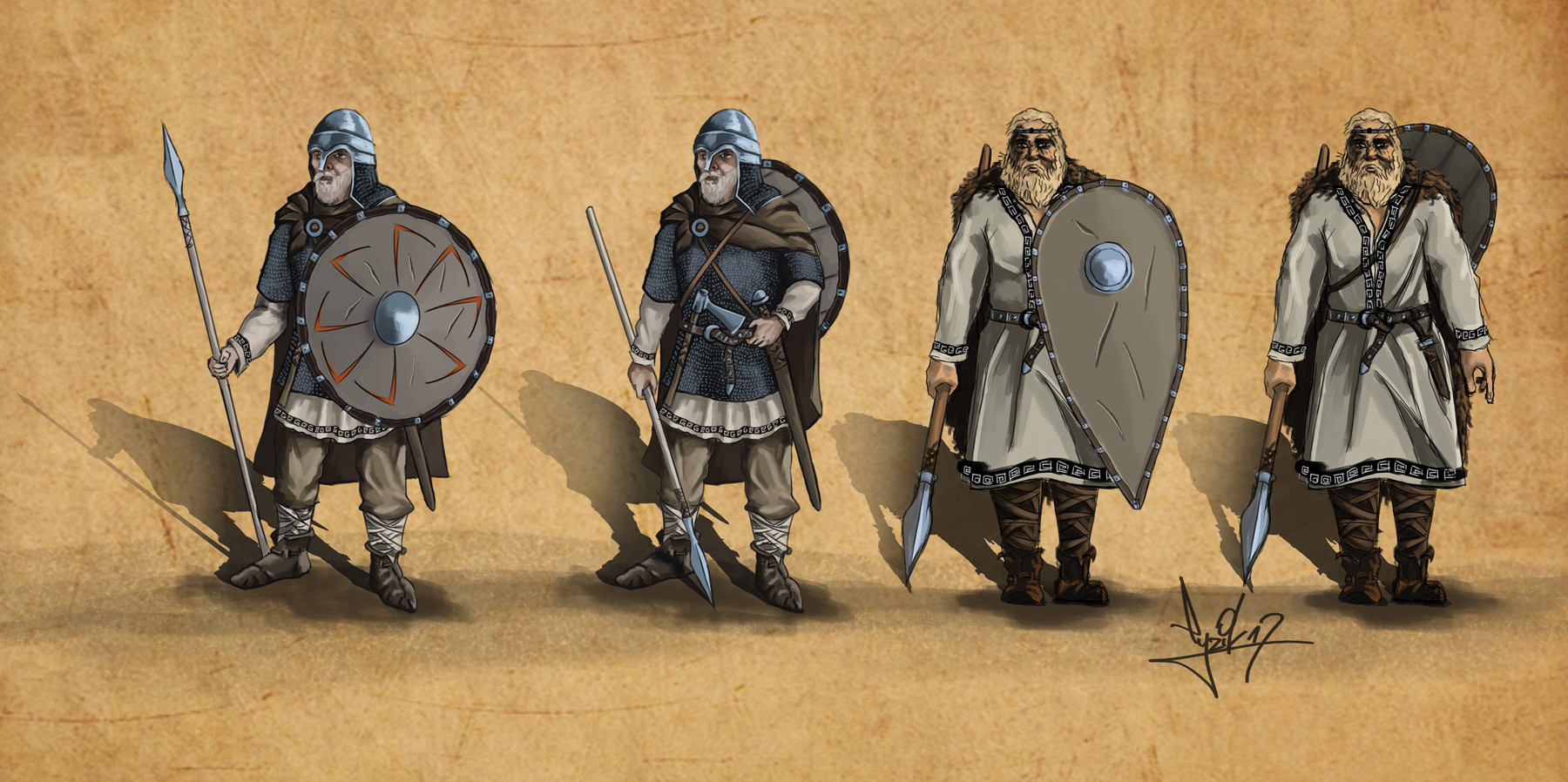

Watch this to learn more about Justinian II’s first reign, 685-695 (Eastern Roman History).
In 695, the 35-year-old Isaurian Leontios was emperor being the first ruler of the 22-year anarchy period, and to consolidate his rule as he was a usurper with no ties to the previous Heraclian Dynasty he overthrew by deposing Justinian II, he spared Justinian II’s family members such as his mother Anastasia the wife of the late Constantine IV, although Leontios despite being backed by the aristocracy and Blue faction was never that popular basically because he was a usurper with no legitimate claim to the throne, and an Isaurian in origins in which the Byzantines of Constantinople till this point still saw the Isaurians being the people of the mountains of Southern Asia Minor as still barbaric and primitive, even though Leontios was only Isaurian in blood and was not even born in the mountains of Isauria. As emperor, Leontios decided to avoid making offensive measures against the Arabs which Justinian II did, and instead chose to only fight defensive measures against them, though the caliph Abd Al-Malik saw this policy of Leontios as a sign of weakness thus using it to his advantage to launch a naval invasion on Byzantine Carthage in 697, the last piece of land Byzantium still held in North Africa. In response to the Arab invasion of Carthage, Leontios sent an army and the fleet of the Karabasian naval Theme under the command of the general John the Patrician to retake Carthage which happened to be successful at first until the Arab reinforcement fleet arrived in 698 defeating the Byzantines, thus Carthage here completely fell to the Arabs ending the Byzantine Exarchate of Africa. The surviving Byzantines together with John retreated to Crete where John was killed when the surviving soldiers mutinied replacing him with Apsimar, a Droungarios or 3rd in command of the Thematic Army who was of Germanic descent as his name suggests; the soldiers then named him as Emperor Tiberius III fearing Leontios would punish them for losing. The army under Tiberius III marched to Constantinople blockading it while in the city, another outbreak of the Plague of Justinian from the 6th century occurred and inside the city, the Green faction of the chariot races that never wanted Leontios in power anyway switched their support to Tiberius III opening the gates for him, thus Leontios was overthrown making Tiberius III the second ruler of this 22-year anarchy. Leontios then instead of being executed suffered the same fate as Justinian II who he overthrew 3 years earlier, and as Leontios’ nose was mutilated he was sent into monastery arrest in the capital. As the new emperor, Tiberius III was at least successful in resuming attacks against the Arabs in the east led by his brother Heraclius, and in repopulating Cyprus as well with Arab prisoners of war, but the one thing he failed to see was the rising threat of the exiled Justinian II returning. The one thing Tiberius III’s reign would best be known for was the end of Byzantine control over Africa with the complete loss of Carthage which had been under the Byzantines ever since the conquest of the Vandal Kingdom there in 534 by Emperor Justinian I’s general Belisarius, and at the turn of the 8th century, Byzantine rule over Africa was permanently lost as Tiberius III believed that taking back Carthage and keeping it under Byzantine control was too risky considering it was too far from Constantinople. From 698 onwards, Carthage would be under the rule of the Arabs and from here, the Arabs would continue to expand westwards joining forces with the native Moorish (Berber) people who they converted to Islam and from here, they would expand more later crossing the Strait of Gibraltar over to Spain believing it was the easier despite longer way to successfully reach and take over Constantinople.


Meanwhile, for the past 9 years (695-704), the slit-nosed Justinian II remained in exile in the cold and desolate city of Cherson along the freezing north shore of the Black Sea and here, Justinian II- for this story’s case- was put under house arrest and only allowed to walk strictly within the city walls once a day, though he made friends with a local abbot who he told his plans to, which was that of taking back the throne and having revenge on those who wronged him.

The local authorities in Cherson soon began to know about Justinian’s true intentions and therefore planned to have him sent back to Constantinople to be tried and executed and so in 704, he escaped Cherson in the middle of the night fearing for his life, and he fled west across the strait to the mainland of Caucasian Russia which here was part of the land of the Khazars ruled by their khan Busir and when there, Justinian was received well by Busir who even married off his younger sister to Justinian, and when married she was renamed Theodora after the famous wife of Justinian I, again as an act of Justinian II imitating the man he was named after. Both Justinian and Theodora then lived happily in an old Roman mansion given to them along the Black Sea’s northern coast, as this area was once a Greek and Roman colony, though Busir was soon enough given a bribe by Tiberius III to betray and kill Justinian who was discovered to have fled there. However, Justinian soon enough knew of the plot so instead, he killed the men sent to kill him by strangling them with his own hands, and afterwards he fled southwest across the Black Sea to the new land of the Bulgars to seek their alliance, however leaving his wife behind. On the way to Bulgaria in 705, the ship Justinian was in got caught in a storm, though at least they all survived and arrived safely in Bulgaria, now ruled by Khan Tervel, the son of Asparukh who had died back in 700. Justinian II here was able to gain the assistance of Tervel and his Bulgar army in exchange for Justinian paying tribute to him as well as giving Tervel an honorary Byzantine title, and together they marched south to Constantinople and along the way in Thrace, Justinian and Tervel encountered the 20-year-old Syrian shepherd Konon, who with his family had been relocated by Justinian II there 10 years earlier. Konon here was someone who was willing to use every opportunity to get himself into a position of power, and the right opportunity came for him here when meeting Justinian II who was on his way to take back the throne, and here Konon thought of finding a way of getting into the imperial service as a soldier and spy by providing Justinian II and his army with sheep to eat.

Justinian II here at his tent privately met the young Konon for dinner which Konon prepared himself- for this story’s case- and what was prepared was a lamb dish cooked in the Arabian style with lots of flavorful spices, which was a dish from Konon’s native Syria with some influences from the Arabs that had passed there, and here Justinian II was greatly impressed not only by Konon’s ability to cook such flavorful food but with how he could speak Arabic so fluently and with how much he knew the culture and way of thinking of the Arabs. Soon enough, Justinian II together with his Bulgar allies and Konon arrived outside the walls of Constantinople where they camped outside for 3 days as Justinian was denied entry since the people still despised him even after 10 years. After 3 days, Justinian with a few of his men were able to sneak into Constantinople in the middle of the night finding a way up through the 4th century aqueduct, and when inside the aqueduct Justinian and a few of his men including Konon climbed down through a building attached to the aqueduct.

The next day, the people were shocked to see the former emperor with his nose cut-off together with Bulgar soldiers walking through the city’s streets, while Tiberius III after just waking up fled across the Bosporus to the Asian side of Constantinople when hearing Justinian II returned. Now back in power, Justinian II honored his promise to Khan Tervel naming him a Caesar, which now was just an honorary title, while Tervel was the first foreign ruler to receive the title, and as Tervel and his army returned to Bulgaria, Justinian II at 36 was crowned again being the 3rd ruler of the anarchy period, and now known as Justinian II Rhinotmetos or “the slit-nosed” in Greek, using a replica of his nose made of gold to cover the cavity where his real nose once was, as a way to make it seem he was still in perfect shape.

In 706, Tiberius III over in the Asian side of the Bosporus was captured and brought to Justinian II who as usual had Tiberius’ nose cut off, and together with the previously deposed Leontios who was dragged out of the monastery he was in, they were both paraded in Constantinople’s streets with their cut-off noses exposed before both were brought to the emperor’s box at the Hippodrome where Justinian II when watching a chariot race used both Leontios and Tiberius III as his footstools with each of the former emperors’ necks stepped on by a foot of Justinian II as a symbol of having conquered both of them, and afterwards both Leontios and Tiberius III were beheaded followed by a purge ordered by Justinian II on all those loyal to both usurpers leading to the deaths of thousands including Tiberius’ brother Heraclius. Konon meanwhile was sent over by Justinian II east to negotiate with the rulers of the small kingdoms of Alania and Lazica over in the Caucasus to make them recognzie Justinian II’s return to power, and also to spy on the Arabs there as Justinian now knew Konon knew the behavior of the Arabs. Although Justinian true enough betrayed Konon here by stranding him across the Caucasus, but Konon soon managed to return to Byzantine territory by foot crossing the snowy mountains with just snowshoes. Konon would then disappear into the Anatolic Theme in Asia Minor for some time now, and in this story’s case he would marry a Greek woman named Maria like in real history, though for this story’s case she would be the daughter of the Theme’s Droungarios, and by this point they would have their first child, a daughter named Anna whose real birthdate is unknown, but in this story she would be born in 708.

As for Justinian II in his second reign, his full purpose of ruling the empire now would no longer be for growing it, but to carry out revenge on all those who wronged and humiliated him before, and this is when he would be known as the bloodthirsty madman emperor he is better known as. In his second reign, Justinian II put all his energy into purging all those who opposed him and helped overthrow him back in 695, and true enough not a day went by without anyone being arrested or executed, though also in 706 Justinian’s Khazar wife Theodora and their infant son Tiberius arrived in Constantinople being sent there by the Khazar khan Busir who now gave up the plan of betraying Justinian due to Tiberius III being deposed and executed. Just as he did in his first reign, Justinian II resumed his impulsive style of ruling in his second one that in 708 he launched a campaign against the Bulgars and their Slav allies to gain the lands he gave up to the Bulgars in exchange for returning him to power, thus even betraying his closest ally Tervel who helped him take back the throne in 705, though Justinian II and his forces were defeated by the Bulgars forcing him to renew his peace agreement with Tervel. The defeat of the Byzantines to the Bulgars in 708 allowed the Arabs to continue raiding into Asia Minor, in which in 709 they managed to capture some cities in Cilicia, and from there go as far deep into Cappadocia too, and because of the defeats the Byzantines had suffered, Justinian II in his usual act of vengeance had the commanders he saw responsible for it executed, despite them being capable leaders, thus the empire would lose some of its best military leaders. On the other in 709, Justinian II turned his attention to the remains of Byzantine Italy, particularly Ravenna in which he found out was the place that opposed him the most, and it was true enough the aristocrats of Ravenna including its bishop that played a major part in overthrowing him back in 695. Justinian II here though succeeded in sending an expedition to Ravenna to round up and arrest all those who conspired against him, afterwards all these people were brought over to Constantinople where Justinian had these aristocrats, true enough his life-long enemies executed right in front of him while the bishop’s eyes were gouged out. As many people were already beginning to flee Constantinople in fear of getting killed by the emperor’s orders, since soon enough everyone no matter guilty or innocent as long as seen as suspicious by the emperor were put to death or killed in the confusion and because of Justinian II’s tyrannical rule, the colony of Cherson where he was banished to earlier on rose up against him in 710 under the Armenian patrician general Bardanes or Vardan, who Justinian II had just sent there to be in charge of it. Now Bardanes was someone who really desired the throne that back in 695 when Leontios seized power, Bardanes who helped Leontios eyed the throne more than Leontios did. As the uprising against Justinian II in Cherson grew even worse when Bardanes allied himself with the Khazars, Justinian II in 711 then sent an army to Cherson to deal with rebellion, but instead the army sent there defected to rebels later on sailing south to Constantinople finding out Justinian II was away as he headed over to the Armeniac Theme to again suppress another rebellion against him by the aristocracy there. With the emperor gone, Bardanes and his rebel forces were let into the city by the people who were tired of Justinian II anyway, and thus Bardanes was proclaimed here as emperor renamed Philippikos while Justinian II never made it back as on December 11 of 711 Justinian II when heading back to Constantinople to counter-attack Philippikos was arrested and beheaded at age 42.

Shortly after, the soldiers of Philippikos hunted down Justinian’s 6-year-old son Tiberius in Constantinople who was hiding in a church with his grandmother, Justinian’s mother Anastasia and when caught, the young Tiberius was hacked to death by the soldiers, thus fully ending the bloodline of Heraclius and the Heraclian Dynasty. Anastasia though as a woman was spared but would never be heard from again, while Justinian’s wife Theodora in this story’s case would return back to her native land of the Khazars, while Justinian’s head was then sent to Rome and Ravenna to be paraded and displayed in public whereas everyone cheered as the evil emperor was dead, and although he tried to live up to Justinian I whom he was named after, he was only Justinian II and not the “Second Justinian”. A legacy that Justinian II left behind however was the introduction of the Loros or a long golden embroidered scarf wrapped around the body as the new uniform for Byzantine emperors, as previously this kind of outfit was only worn by consuls in the Byzantine senate, but with the office of consul now abolished, this uniform became for the emperor’s use only beginning with Justinian II, and it would now be the standard uniform for Byzantine emperors till the very end.

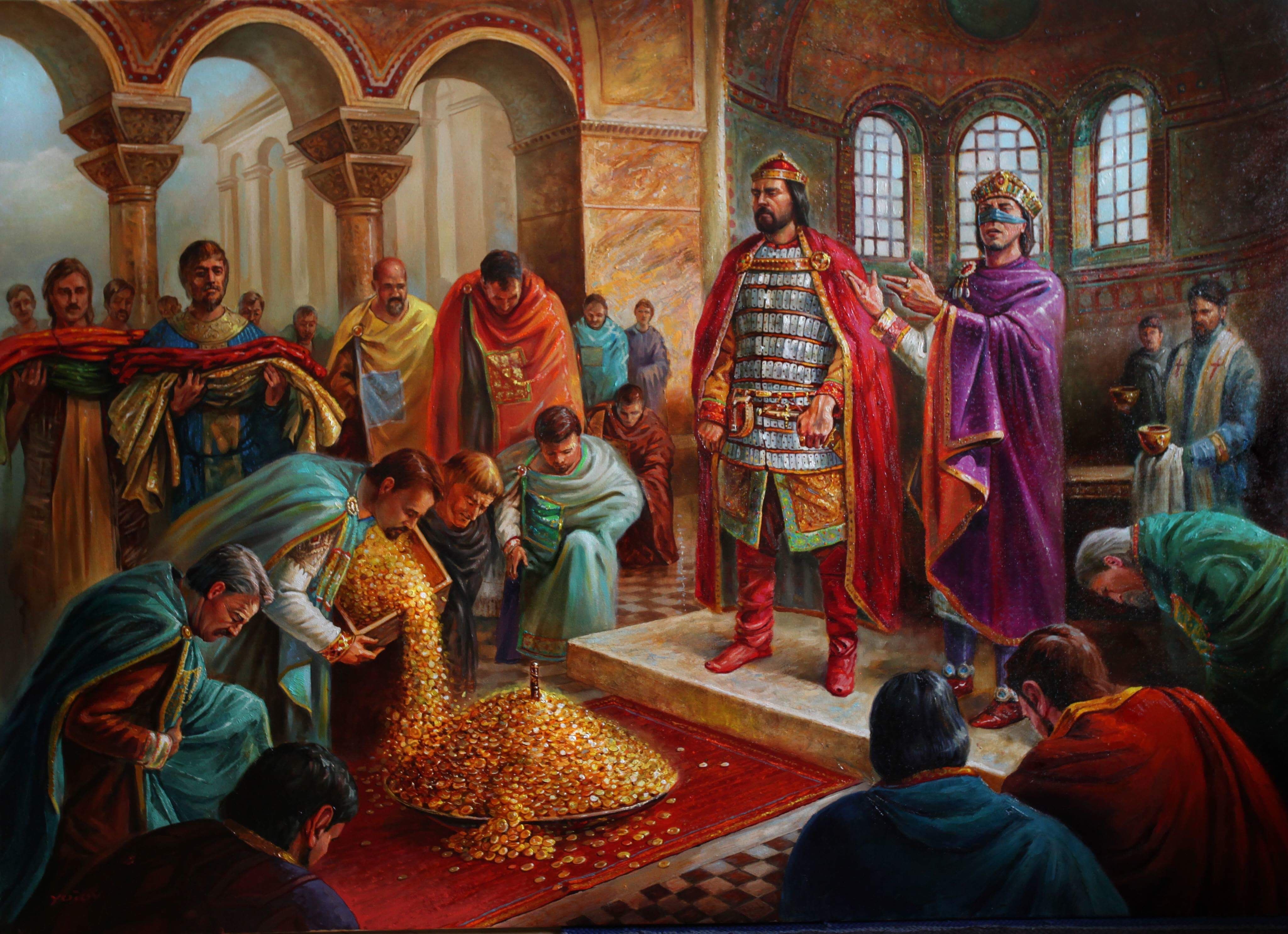

In 711 as well, the same year Justinian II’s rule was finally put to an end with his execution, the Arab Umayyad Caliphate now under its new caliph Al-Walid I was at its height of power as here in 711, the Arab armies from North Africa together with their subjugated local Moorish forces there had finally begun their conquest of Europe by crossing the Strait of Gibraltar into Spain easily defeating the weakened Visigoth Kingdom there. Previously, the Christian Visigoth Kingdom of Spain that had been around there since the 5th century after the Germanic Visigoths took over Spain from the Western Roman Empire- if you remember from chapter II– by the late 7th and early 8th century fell into civil war thus further weakening it, that when the Arabs finally crossed into Europe through Spain, the Visigoths stood no more chance and in only a few years after 711, the Visigoth Kingdom would meet its end, although remnants of Visigoth Spain would still survive as the Christian Kingdom of Asturias in the north formed by the surviving Visigoths, and this new kingdom would resist against the expansion of the Arabs before turning the tide of war against them beginning the Christian Reconquista a few centuries later.

The Arabs though would still stop at nothing conquering everything in the name of Islam that in only about 10 years after arriving in Spain, they had already conquered almost the entire Iberian Peninsula including what is now Portugal, leaving the Christians including the ever-independent Basque people to the remote corners of Northern Spain, and this was not yet the end as the Arabs were also set to conquer the Frankish Kingdom to the north. In the east meanwhile, the rule of the Arab Umayyad Caliphate had already reached as far as the Sindh region in today’s Pakistan which they had conquered back in 708, thus the rule of the Arabs now spanned from the Atlantic Ocean all the way east to the Indus River. Back in Byzantium, the new emperor Philippikos as the 4th ruler of this anarchy period had turned out to not really be an effective ruler, as the only thing he did good for his people was finishing off the madman Justinian II but plainly as a general, he had not much experience in politics and at the same time, he as an Armenian was also a believer of the Monothelite doctrine that was condemned as a heresy by Constantine IV back in 680 as the Monothelite faith was stronger with people in the eastern regions of the empire like Armenia. In 712, he renounced the ruling of the 680 Council of Constantinople attempting to restore the Monothelite doctrine of Christ having only one energy, thus Philippikos fired the Orthodox Patriarch of Constantinople Cyrus replacing him with the Monothelite John VI, and here is when the foundations of Iconoclasm as an imperial practice was laid when the emperor had some religious icons in the capital that did not please him removed. For returning the heretical Monothelite doctrine, Philippikos soon enough became hated by his people and opposed by the pope in Rome, and because of executing Justinian II, the Bulgar khan Tervel who still had some loyalty to the late emperor struck back and raided into Byzantine Thrace going as far as the Walls of Constantinople. To counter-attack the Bulgars, Philippikos sent the army of the Opsikion Theme right across the sea from Constantinople to cross the Bosporus into Thrace in order to push back the Bulgars which they were successful at, although when putting too much attention to fighting the Bulgars up north, the Arabs attacked Asia Minor by land again from the east. In 713, the Opsikion army that beat the Bulgars rebelled in Thrace marching straight into Constantinople where the city’s garrison easily opened the gates for them as they and even Philippikos’ bodyguards had turned out to have no loyalty towards him as he was again another usurper with no ties to the previous Heraclian Dynasty. The rebelling soldiers then caught Philippikos at the moment he was taking a nap in the imperial palace wherein they dragged him out to the Hippodrome where he was publicly blinded, and after that sent to a monastery wherein he died some months later also in the same year as a result of his injuries from the blinding. With Philippikos deposed in 713, the Opsikion Theme army chose to proclaim Philippikos’ senior secretary Artemios as their new emperor who then was renamed as Emperor Anastasius II thinking he could be easy to manipulate, but the Opsikion army here was wrong as true enough he did not want to be a puppet and so he executed the soldiers who plotted to overthrow Philippikos as a way of installing discipline. Anastasius II was then the 5th ruler of the anarchy period and it was in his reign in 713 when Artavasdos first comes into the picture whereas here he was 26 at this point and already a highly skilled soldier and for his skills, Anastasius II appointed Artavasdos as the Strategos or commanding general of the Armeniac Theme where he came from. In 714, the Arabs continued their attacks penetrating as far as the Anatolic Theme in Asia Minor and soon enough they had blockaded the coastline of Asia Minor with their fleet, and in response to these Arab attacks, Anastasius II ordered that the land and sea walls of Constantinople be repaired fearing a possible siege of the city. At the same time, Anastasius II also ordered that the food supply of Constantinople be restocked to last at least 3 years, had the fleet rebuilt, and in 715 cancelled the Monothelite decree Philippikos had issued returning to Orthodoxy again by deposing the Monothelite patriarch John VI and replacing him with the Orthodox Germanus I. Konon then comes back again to the picture in 715 when Anastasius II appointed him to be the Strategos of the Anatolic Theme wherein he now settled as Anastasius II saw that Konon possessed a lot of military skill and afterwards Konon was sent east to surprise attack the Arabs in Syria, as here the caliph Al-Walid died as well in which Anastasius saw as an opportunity to resume the attacks on the Arabs. Anastasius II too sent a fleet to come to the defense of Rhodes in case the Arabs would attack it but here the same Opsikion army troops that put Anastasius in power 2 years earlier felt betrayed by him thinking he sent them there to die, and so they mutinied, gave up on the mission, and returned to the Opsikion Theme. The army though this time could not find the right person to name as their new emperor until finding an unlikely random unnamed tax collector of low birth who they elected as emperor, although he was unwilling to and fled to the woods to hide but was soon enough found hours later and had no choice but to be proclaimed as Emperor Theodosius III being the 6th and last ruler of the anarchy period. Constantinople was then put under siege for the next 6 months which later resulted in Theodosius III victorious and Anastasius II fleeing across the Bosporus to the city of Nicaea where he was later found in 716 and forced to abdicate and retire peacefully as a monk in Thessaloniki, as Theodosius being a merciful and reluctant ruler wanted to avoid any form of bloodshed. The Umayyad Arab forces meanwhile under the command of their general Maslama, brother of the new caliph Suleiman which were still in Asia Minor in 716 laid siege to the Anatolic Theme’s capital Amorion where the Theme’s Strategos Konon with his wife Maria and daughter Anna were in after he just returned from his campaign in Syria.

Konon however knowing the Arab language convinced Maslama and his forces to leave by promising them he would be their ally if he would take the throne from Theodosius III as the fact that Theodosius was a weak and reluctant emperor gave Konon now the right opportunity to fulfil his dream of taking over the throne. In late 716, Konon had found common ground with the Armeniac Theme’s Strategos Artavasdos who also intended to overthrow Theodosius III, and here in late 716 Konon proclaimed himself emperor when meeting up with Artavasdos on the way to Constantinople. Theodosius III meanwhile knowing the Arabs would soon besiege Constantinople renewed Byzantium’s alliance with the Bulgar khan Tervel, though at the same time in early 717 Konon and Artavasdos when arriving in the city of Nicomedia very close to Constantinople captured Theodosius’ son also named Theodosius who was however spared and in so little time, the rebelling armies of the Armeniac and Anatolic Themes arrived outside Constantinople ready to besiege it again. Theodosius III however did not want another fight, and not wanting to be emperor anyway, he abdicated in favor of Konon and retired to become a monk, while here on March 25 of 717, Konon was no longer Konon but now renamed as Emperor Leo III proclaiming an end to the 22-year anarchy.


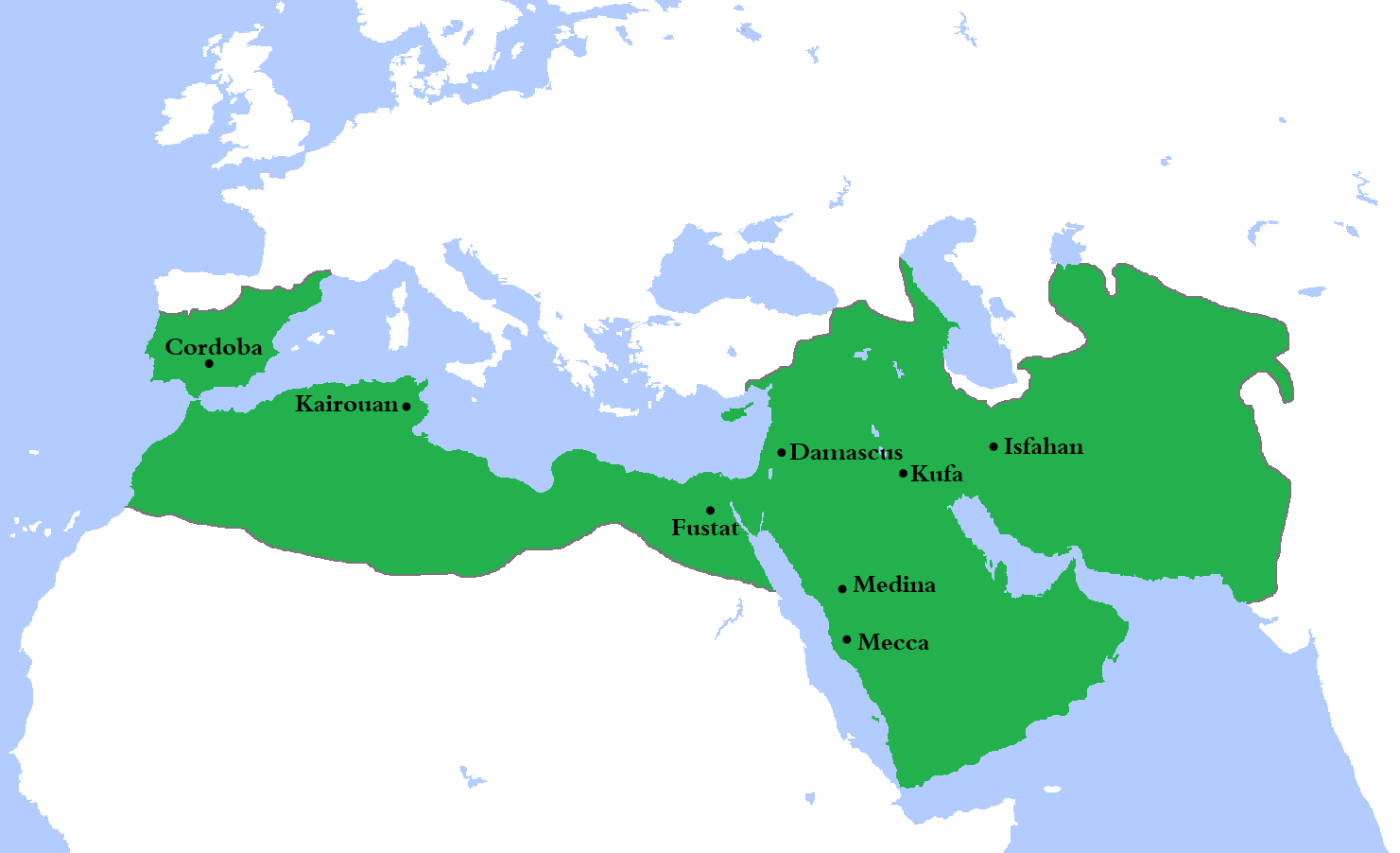
The Siege of Constantinople- “The Battle for the Fate of Europe” (717-718)

On March 25 of 717, Konon the simple Syrian shepherd boy with a cunning mind and deep knowledge of the Arab culture was now the emperor of the Byzantine Empire Leo III the Isaurian, except the empire he now came to rule was a shell of its former self. In 717, Byzantium only controlled slightly more than half of Asia Minor, only Eastern Thrace in the Balkans, less than half of Greece, and in Italy only Sicily, the southern regions, Rome, Ravenna, and the Istrian Peninsula (part of today’s Croatia), although at least all the Aegean Islands together with Sardinia and Corsica and the remote colony of Cherson north of the Black Sea were still Byzantine, as the Lombards occupied most Italy, the Slavs occupying what was once the Byzantine Balkans, and the rest of course having already fallen to the Arabs. Here in 717, Konon now as Leo III was emperor at 32 with long curly dark brown hair, a short beard, and a short and stocky built while Artavasdos here hitting the age of 30 looked somewhat like Leo except much taller and thinner with long black hair and green eyes and at the same time too, Leo’s wife Maria and daughter Anna had arrived in Constantinople settling themselves in the imperial palace.

Leo not wanting to be another usurper that would easily be overthrown possibly 2 years later again as he had literally no ties to the previous Heraclian Dynasty or any dynasty before it here promised Artavasdos to marry off Anna despite Anna being 21 years younger than Artavasdos, which was a sure way to establish a new dynasty and in addition to this, Leo even promised that if ever he died Artavasdos as his son-in-law would immediately succeed him to the throne as Leo had no sons, but just about a month later in this story’s case, Maria happened to be pregnant which gave some joy to Leo and a bit of a sense of uneasiness for Artavasdos, especially if Maria were to give birth to a son. The moment Leo III came to power, he immediately broke his alliance with the Umayyad Caliphate as he never wanted to ally with them anyway, only pretending to make an alliance to get them to leave so instead, he chose the same old Bulgar khan Tervel up north who he met back in 705 with Justinian II as his ally, renewing the alliance of Theodosius III. The Bulgars meanwhile still hated the Byzantines for various reasons, but they hated the Arabs even more and so for the sake of keeping the new Bulgarian state alive in order to not fall to Arabs knowing that the Arabs would stop at nothing to conquer, Tervel decided to ally with the Byzantines having the Umayyad Arabs as their common enemy, although Leo III did not meet Tervel personally here, but instead they only exchanged letters with each other.
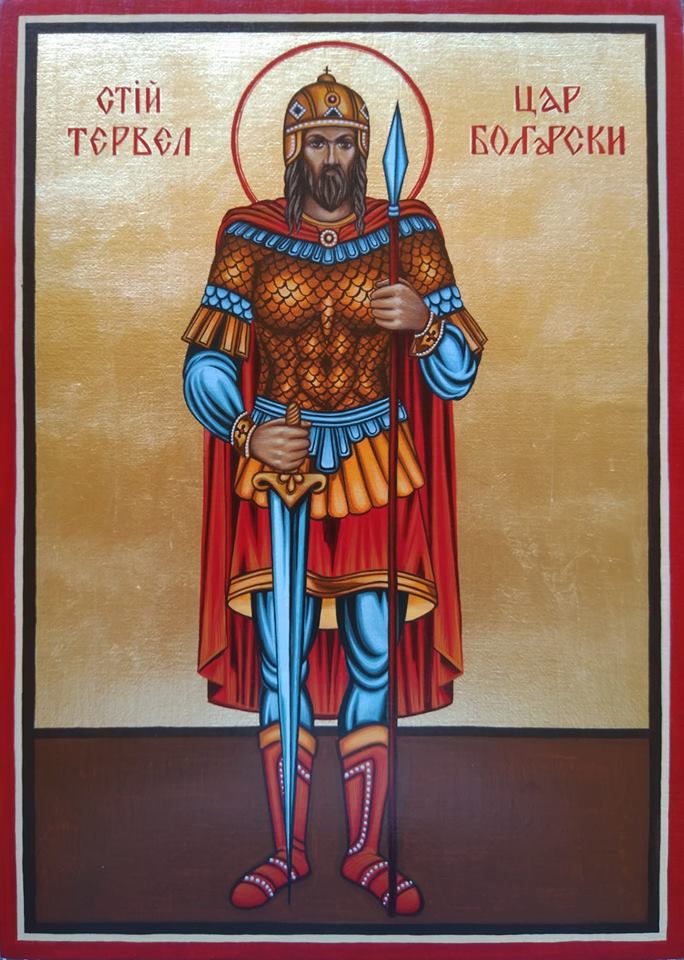
Over in Damascus, the new caliph Suleiman who had succeeded his brother Al-Walid in 715 soon enough got word that Leo betrayed his promise of allying with them when a letter from Leo reached him saying he had never wanted their help anyway and only for them to leave, but this here totally enraged Suleiman making him send an army of 80,000 men from all parts of the Umayyad Caliphate from North Africa to Syria, from the Arabian Desert to Central Asia together with a fleet of 1,800 ships to directly attack Constantinople under the command of again his brother Maslama intending to finally carry out the ultimate dream of the Umayyads. In July of 717, Leo III together with Artavasdos in this story’s case had already completely fortified Constantinople’s land and sea walls stationing a sufficient number of troops and by August, the Arabs now crossing the Dardanelles strait into Thrace arriving in Europe built a temporary stone wall some kilometers away from the 5th century land walls of Constantinople to guard their Thracian camp and block all reinforcements coming for the Byzantines, while the fleet later sailed directly into the Marmara Sea and Leo III from the rooftop of the imperial palace saw the Arab army and fleet miles away. Now to completely seal off the city’s harbor or Golden Horn from the attack of the Arab navy, Leo III had a large chain as long as 20m placed on opposite ends of the harbor’s entrances, one side being the main city and the other side being the Galata District across the harbor. The situation now seemed hopeless for the Byzantines as the 22 years of anarchy, riots, and executions issued by Justinian II depopulated the capital and its army, therefore the walls which Anastasius II luckily repaired was the city’s only hope for survival and if not for that, Byzantium would soon enough already end. However, when all hope seemed to be lost, a young patrician eunuch working in the imperial court named Eutychius– in this story’s case- presented to Leo the empire’s state secret, the superweapon of Greek Fire in which here only 3 ships were equipped with it, and at this moment, the procedure of operating the weapon was given to Leo III for his and the operating team of the navy’s eyes only.

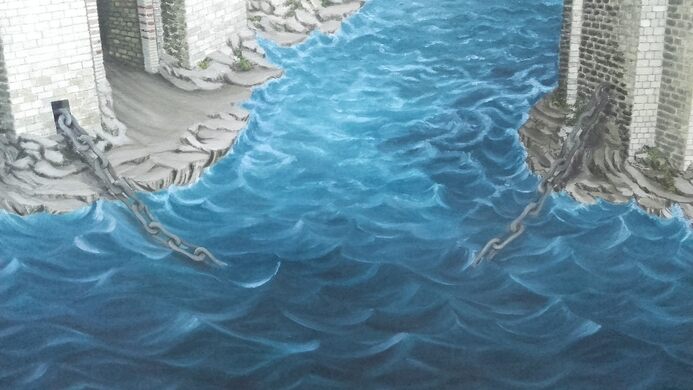

The “Battle for the Fate of Europe” then began when the Arab fleet attacked Constantinople from the sea, while the army of 80,000 attacked by land completely surrounding the city to completely block it off from any reinforcements or food supply but luckily, the people of Constantinople had a food supply that could last for 3 years, thanks to Anastasius II. The people inside the city were now all fearing the worst and so Leo III despite not wanting to lay his eyes on religious icons encouraged the people including soldiers to all rally under them to boost their morale as here too, with a lack of soldiers, civilians whether women or children including the elderly and monks were all encouraged to defend the walls. The first wave of attack came from the Arab fleet attacking south from the Marmara, but before arriving at the entrance to the city’s harbor, Leo III deployed the 3 large ships with Greek Fire in it right against the advancing Arab fleet and at the end, the Greek Fire totally burned down 20 of the Arab supply ships while its sailors either died burning or jumped into the water and drowned to death at the frightening sight of liquid fire emitted from a large brass gun- an ancient version of a flamethrower. Not a lot of the Arab ships though were destroyed, but after seeing 20 of their ships burned by a kind of flame never seen before, the sailors decided to just give up, therefore the ships instead docked outside the Galata District unloading troops that laid siege to the walls there.
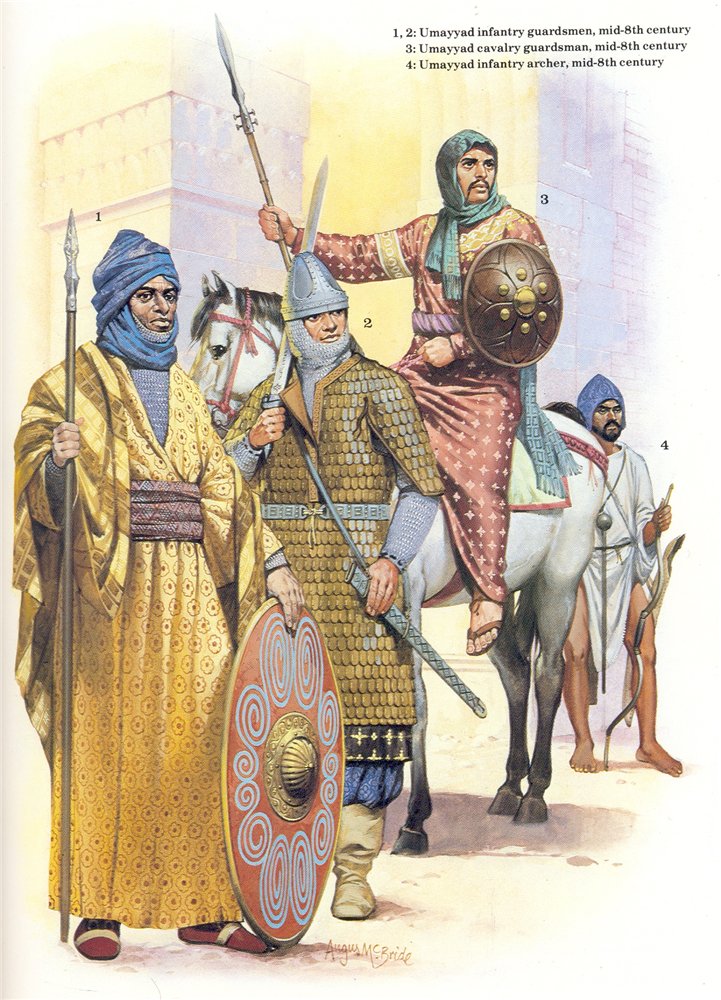
The main army however was still over in Thrace while their general Maslama chose to stay there camped outside Constantinople the whole time believing they will win this way as back in previous Arab siege from 674 to 678, the Arabs using the strategy of launching minor attacks and retreating back to their bases in Asia Minor when winter came proved unsuccessful and resulted in the loss of a lot of men. As the months passed and autumn came, the Arabs happened to run low in their food supply as there were too many men sent on this expedition with not enough to feed them, while Maslama did not expect the siege to last this long, therefore a group of the Arab army formed a foraging party that pillaged the countryside of Thrace to find food whether it was grain from the farms or mushrooms from the woodland areas. At this point when a foraging party of 4,000 Arabs searched the countryside of Thrace for food, the Bulgar cavalry army of Tervel finally came to the aid of the Byzantines, and here they ambushed and completely wiped out the foraging Arabs, afterwards returning back north to Bulgaria for the meantime. Leo III on the hand came up with the strategy of delaying the siege for the attacking Arabs since he knew winter would come soon and knowing the Arabs well, he knew that winter was their ultimate weakness as they came from the southern deserts in Arabia where snow did not exist and true enough when the winter of 717-718 came, it was an exceptionally harsh one even for the Byzantines. The winter then happened to go on for 3 months with the snow covering the ground the entire time disabling the Arabs to continue attacking Constantinople’s walls, but allowing the Byzantines to return to rebuilding their defences due to the Arab attacks slowing down. As the months passed, the Arabs soon enough ran out food supply considering that their army was still large in number that the Arab troops had to resort to first eating their horses and camels as well as weeds, tree barks, leaves, and mushrooms in which some were even poisonous thus killing some of them. The famine soon enough grew even worse as the winter passed that it was even reported that the Arab soldiers had to resort to cannibalism eating the flesh of their fellow fallen soldiers that had died either from battle, the cold of winter, or from starvation, and to mask the taste of human flesh and blood, the Arabs had to go as far as coating the human flesh they ate with their own shit. With the increase of the death toll in the Arab army rising each day, burying their fallen soldiers became a problem so the Arabs too had no choice but to eat their dead fellow soldiers. At the same time too as the Arabs laid siege to Constantinople, the caliph Suleiman had died in the town of Dabiq in Syria in September of 717 and was succeeded by Caliph Umar II who was not related to him but still ruled as part of the Umayyad Dynasty and when the spring of 718 came, the new caliph sent a reinforcement army and fleet from Egypt making the situation for the Arabs improve by a bit. The sailors in the Arab reinforcement fleet however were mostly Christians as the Muslim sailors were already used in the first wave and being Christians, these sailors immediately switched sides joining forces with the Byzantine navy thus turning the tide against the Arab fleet which was soon enough outnumbered. Here also in the spring of 718, Leo III had his ships with Greek Fire again attack the Arab ships blockading the Bosporus Strait from the north, and with the power of Greek Fire the entire Arab fleet blockading the Bosporus was destroyed.
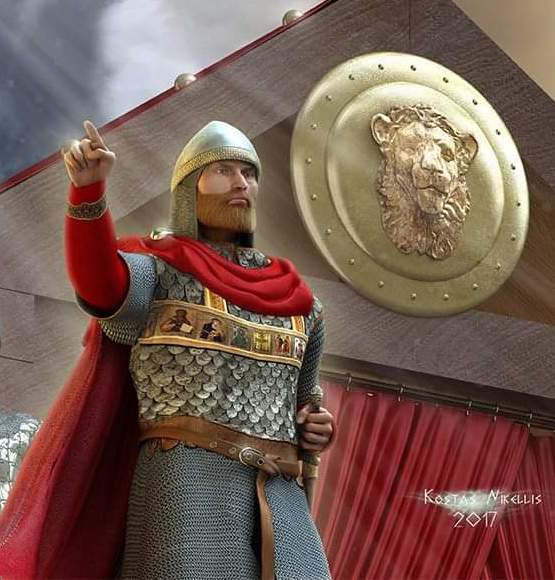
In this story’s case, Leo III together with Artavasdos and Eutychius were on one of the ships equipped with Greek Fire and as Leo kept ordering the weapon to nonstop shoot out fire, he saw for himself that the weapon had a flaw too which was that if it was overused, it could overheat and possibly explode or shoot fire back at them, though the other flaw was that it was unwieldy as the gun was too heavy and its range for shooting fire was only a few meters, therefore to burn an enemy ship they had to go up close to it. In this story’s case too, after the Arab fleet blocking off the Bosporus was destroyed, Leo together with Artavasdos got off in the Asian side across the Bosporus leading a cavalry charge themselves against the Arab reinforcement army there and by summoning the nearby Opsikion Theme’s army to march there, they both succeeded in totally decimating the 20,000 Arab reinforcements by attacking from both sides trapping them. Across the Bosporus in Thrace meanwhile, the now over exhausted remnants of the Arab army that survived the winter were still camped there, and by the time the Bulgar cavalry arrived again this time with Khan Tervel personally leading them, the Arabs with no more strength stood no chance, and a large number of them were massacred.
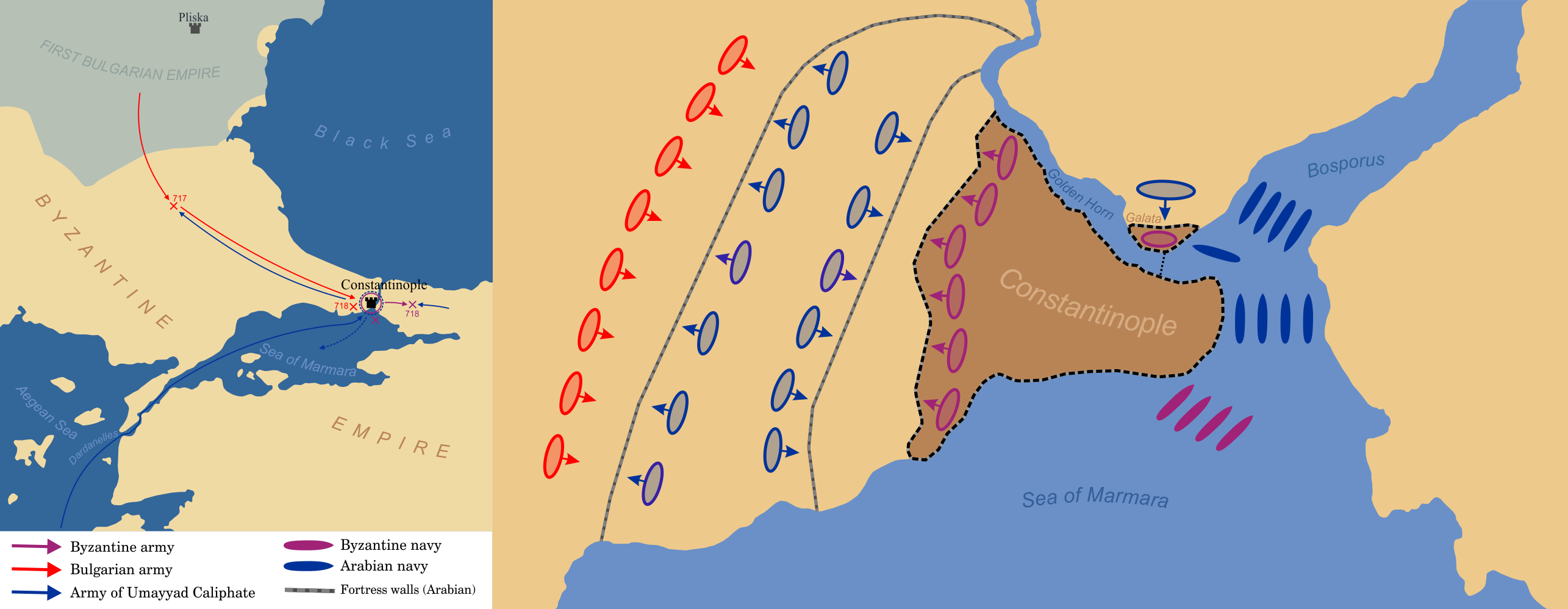



The siege then continued to go on for a bit more than a year until August of 718 when Maslama who was still alive got word from the caliph Umar II himself to immediately abandon the siege as if it went on, then they would lose more men therefore creating a shortage of troops in the caliphate. In over a year, about 30,000 Arab soldiers had died, though mostly from the winter and from the Bulgars as the Byzantines forces true enough did not do much of the fighting but rather more particularly the defense of the walls. While the Arabs retreated back to their ships, the last remnants of them in Thrace that were rushing into their ships were again massacred by Tervel’s Bulgars. Maslama then led the army in their retreat to Syria and along the way, a storm in the Marmara destroyed a large portion of the retreating Arab fleet, while the rest were also destroyed by the larger Byzantine ships pursuing them that at the end, only 5 of the 1,800 ships sent to Constantinople made it back safely to Syria. All thanks to Greek Fire, a brutal winter, the assistance of the Bulgars, and a mass defection of the Arab navy, the Byzantine Empire survived the event that could have brought about their end, and with the Byzantine victory it was not only them that was saved, but the rest of Europe as well, as if the Arabs managed to defeat the Byzantines here, then the way for them to conquer the rest of Europe would be clear. As for the Arabs, this attack on Constantinople was completely fruitless that this defeat made them swear to never attack Constantinople again, and true enough this would be the last time the Arabs would attack Constantinople with full force and at the same time, this defeat would totally weaken the prestige of the powerful Umayyad Caliphate that was still at its greatest territorial extent here. Though Constantinople was spared once more, the wars between Byzantium and the Arabs was not yet over and as emperor, Leo III from here on would focus his policy on continuing the attacks on the Arabs to weaken them, but first it was time for him to consolidate his rule. However, for saving the Byzantine Empire from its ultimate destruction, Leo III at only 33 was hailed as a national hero, and the biggest feat here was that he went from a simple shepherd boy to the savior of the empire.

The Reign of Leo III and Iconoclasm (718-741)

Having saved Byzantium from ultimate destruction, Leo III now in 718 focused on rebuilding the severely damaged empire he inherited and luckily for Leo III, he could now finally establish his own dynasty thus ending all the instability Byzantium faced as here too back in June of 718, his wife Maria gave birth to a son who was named Constantine after the emperor Constantinople was named for and founded by, Constantine I the Great (r. 306-337), the founder of the Byzantine Empire. With the birth of the boy Constantine, Artavasdos who was still in Constantinople here was deeply upset as he thought the throne would be passed on to him, but being loyal to Leo III, he hid his true feelings and now after the siege was over, Leo III thanking Artavasdos for his part in helping him come to power and successfully defending Constantinople was awarded the title and position of Kouropalates which was basically the head of the imperial palace, although Artavasdos also retained his position as the Strategos of the Armeniac Theme wherein he would reside in its capital of Amasea for most of Leo III’s reign.

Meanwhile over in Byzantine Sicily in 718 as the siege was still happening in Constantinople, some fake news had reached there saying that Constantinople had fallen to the Arabs and in the panic there, the people named a local government official there named as Basil as their emperor believing there was no more emperor, but when Leo III in Constantinople got word of this, he sent a part of the army to Sicily to crush this rebellion not wanting the previous anarchy period to repeat itself. When the army arrived in Sicily telling everyone Constantinople was still theirs and that they still had an emperor, the people of Sicily still being loyal surrendered the usurper Basil who was then executed right there while his head and hands were sent to Leo III too. Back in Constantinople later on in 718 a few months after young Constantine was born, he was baptized by the same patriarch Germanus I who also survived the siege and in attendance were both his parents, older sister Anna, and Artavasdos who was soon to marry her, and here a very bizarre and apocryphal incident happened which was although written by sources hostile to Leo III and his son Constantine saying that Constantine as a baby took a shit on the water he was being baptized in, which here in this story’s case is true hence the origin of the nickname he would be known by later on being Kopronymos meaning “shit-named” in Greek. Just a year later in 719, the ex-emperor Anastasius II came out of his monastery in Thessaloniki intent on taking back the Byzantine throne from Leo III therefore marching east to Constantinople supported by the Bulgars of Tervel who then betrayed Leo III switching support to Anastasius II. In response to this, Leo III personally led the army west where he confronted the small army of Anastasius II defeating it and having the ex-emperor executed while the Bulgars retreated back north to their homeland. Leo III here by executing Anastasius II made his intention plain and simple that he was there to stay and establish a dynasty to make sure the 22-year anarchy period was no longer to last, and to further make sure he was there to stay in power till death, he focused on reforming the empire, first of all by reducing the power of the Themes’ Strategos (plural: Strategoi) as he knew by holding so much power as he had seen it before with himself as a Strategos and with the Opsikion Theme overthrowing both Philippikos and Anastasius II that with this much power, an emperor could be easily overthrown, and part of his reforms in the Thematic System was dividing the Karabasian naval Theme creating a new naval Theme in charge of the entire Aegean Sea using the other half of the Karabasian. In the meantime, his wife Maria gave birth to two more daughters after Constantine, the first one being Irene who in this story would be born in 720 and the next one Kosmo born in 721. Meanwhile in 720 two important events happened, first was the wedding of the now 33-year-old Artavasdos to the 12-year-old Anna in Constantinople- although for this story’s case only, as in real history their marriage possibly happened some time earlier, possibly 717- but here too in this case like in real history, the second big event of 720 was Leo III making his 2-year-old son Constantine co-emperor to fully secure his dynasty, though betraying Artavasdos in the process who was promised earlier by Leo to succeed him. In the ceremony of young Constantine being crowned as his father’s co-emperor, Artavasdos as Mario put it pulled out a dagger from his sleeve, although he quickly left the throne room without saying anything hiding his true feelings of being cheated. Leo III then moved to making one of his greatest achievements in his reign which was a code of laws known as the Ecloga, a continuation of Emperor Justinian I’s Corpus Juris Civilis from the 6th century.

The legal reforms in Leo III’s Ecloga was envisioned to make Byzantium a better place to live in for all classes of society after all the years of war and instability, and these reforms included the abolition of paying the increasingly high taxes the rich had hated, and also the abolition of serfs in the empire who were then turned into landowning peasants. Another major change in Leo III’s Ecloga was in criminal law with the discontinuation of the practice of cutting off noses to prevent someone from taking back the throne as Leo saw that this practice was just silly as Justinian II in 705 came back to power anyway despite his nose being cut-off, instead Leo III replaced this punishment with blinding, as this would surely disable someone from coming back to power, while the punishment of death penalty however was a bit too severe. True enough in the entire history of Byzantium later on, no emperor would return to power blind except for one later on in the early 13th century, as you will see in chapter X of this series.
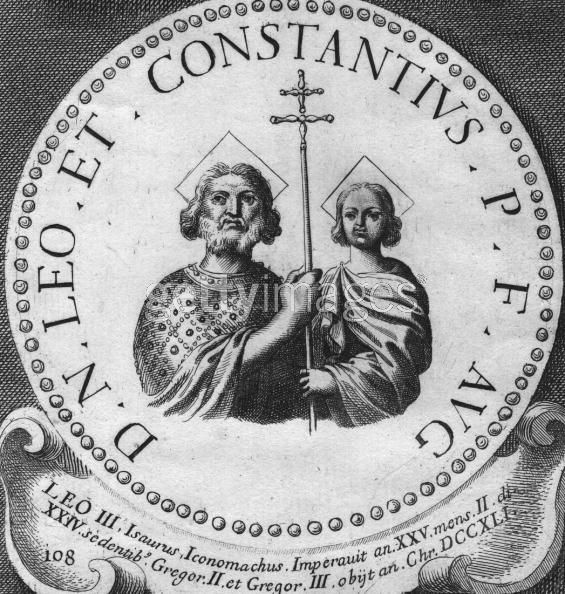
The process in creating the Ecloga took several years and only in 726 was it completely finished as Leo III had to make sure these laws would work, but the one particular thing Leo added here was his own stance on the excessive use of icons in the empire, and although he was not so much a religious person, he strongly believed that what he believed was for the good of the whole empire. Leo originally as Konon from the eastern provinces of Byzantium lived among Monophysite and Monothelite Christians also coming into contact with Muslims and Jews countless times which definitely influenced him in being not a fan of icons, as Jews and Muslims did not believe in worshiping God through images. These Christians in the east believing Christ was only divine believed he could not be seen as a human as well as the Virgin Mary and saints, and seeing Christ as only God, there was no way God could be visualized, and Leo despite being Orthodox leaned heavily towards the beliefs of the eastern Christians. Things for the Byzantines of the western parts including Constantinople, Thrace, Western Asia Minor, Greece, the remains of the Balkans, and the remains of Italy however were different as icon painting and veneration became a very sacred tradition, as there many people were as descendants of the Greeks and Romans kept with them the old Pagan tradition of using images to worship, which from statues of the old gods like Zeus and Athena turned into painted images of saints.

What really disgusted Leo on the excessive use of icons among the people of Constantinople was how they used icons for everything even as godparents in the baptisms of their children, and Leo as a strong believer of the 2nd Commandment Thou shall have no other gods before me had come to believe that this practice of icon veneration was already like Idolatry or worshiping other gods, therefore sinful. Back in 725 before the Ecloga was completed, Leo III made a public speech in the Hippodrome against the excessive use of icons warning people that they were offending God that way, although many here did not take what he said seriously, and Leo though did not punish them in any way too as he only wanted to warn them. Now in 726, the same year the Ecloga was finished, the unexpected happened in the Aegean Sea when the underwater volcano at the island of Thera (today’s Santorini) erupted spewing an ash cloud so high that it could be seen all the way from Constantinople, and Leo III again at the rooftop of the imperial palace where he saw the Arab invasion in 717 this time saw the ash cloud knowing that enough was enough on the icons as God was definitely punishing them for their excessive use on them through the volcano. For the entire 8th century so far and the 7th century before it, Byzantium faced nothing but military defeats, plague, depopulation, political instability, civil wars, and now a massive volcanic eruption, and here the superstitious Leo III had to find something to blame for all these setbacks, and of course what he blamed it all on was his people’s excessive use of icons. Getting word soon enough that this massive eruption came from Thera, Leo III seeing this as the last straw decided to carry out his first public act against icons and so here, he ordered the large mosaic of Christ above the gate of the imperial palace or Chalke Gate removed, which was a mosaic made back in the 6th century to celebrate the victories of Justinian I.

In this story’s case, Artavasdos in an act of loyalty to Leo III as his partner in action and the head of the palace being present in Constantinople here ordered the palace guards to take down the mosaic, although Artavasdos here deep inside did not want to carry out the job as he was married to someone who highly valued icons, the emperor’s daughter Anna wherein despite their major age gap, they were having a happy marriage. Here in 726, Anna was already a very pretty grown woman at 18 with long straight black hair, a slim built with a thin waist, a medium sized chest, and not very tall in height and at only 18, she already had her first son with Artavasdos which was Niketas, though in the past years for this story’s case, she busied herself in pursuing an artistic and scholarly career in painting icons as well as playing music and studying the history and politics of the empire. Anna was present at a corner of the imperial palace complex near the Chalke gate, and seeing the mosaic taken down by no other than her husband truly broke her heart as she lived to make beautiful icons, although she did not fight back by running to her husband or the soldiers asking them to stop, instead she left the scene and went to her mother crying. Maria here at her room in the palace told Anna that she too despite being loyal to her husband Leo III was not at all for the destruction of icons, and so she asked Anna to gather a number of women to fight back.
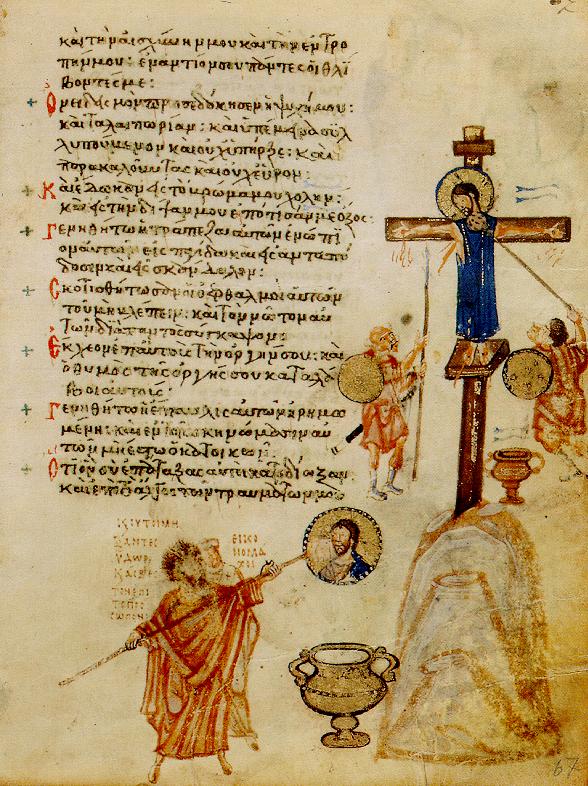
Most men were fine with the destruction of the mosaic of Christ at the Chalke Gate but the women were upset with it, and as it would turn out later on, women had valued icons a lot more than men therefore strongly condemning what would be Leo III’s Iconoclast policy and so here in this story’s case as Mario put it, Anna ordered some local women of Constantinople who were upset with the destruction of the Chalke Gate mosaic to kill the palace guard officer in charge of tearing down the mosaic. Like in real history, the officer in charge of taking down the mosaic was hacked to death by a group of angry women and following this, riots mostly led by women broke out all over Constantinople lasting for the next few years, although intermittently. It was not only in Constantinople though where people opposed the first stage of destroying icons as in 727, the fleet in the Aegean Sea mostly made up of Western Greek sailors that highly valued icons mutinied against Leo III, although their small-scale rebellion was easily crushed where in this story’s case, Leo sent Artavasdos to mercilessly crush it. The uprisings in the empire over the first wave of the confiscations and destruction of icons grew worse over the next years that in 730, Leo III after being convinced by eastern bishops who strongly opposed icons, finally had no choice but to declare a general ban on icons making Iconoclasm or the “destruction of icons” a law in the Ecloga. To fully make Iconoclasm a law, the Church of Constantinople had to be in line with it too, although the Patriarch of Constantinople Germanus I who had been patriarch since 715 did not agree to destroying icons, so here in 730 he resigned and was then replaced by the Iconoclast Anastasios who Leo III appointed, thus Iconoclasm was in full effect with the Church now supporting it. With Iconoclasm now a law, all icons no matter where in the empire and how valuable they were, were to be confiscated by imperial soldiers and to be destroyed either by being smashed or burned, while those caught holding icons were to be punished severely by getting whipped, and for those who restored broken icons or were caught painting icons were to get their hands burned. At this point though, there was still no death penalty on those who supported icons better known as the Iconodules as the laws of Iconoclasm went primarily against religious icons and not the people who venerated them, as the icons were seen as the cause of Byzantium’s failures. A large number of monks and artists who restored icons soon feared for their lives in Constantinople or Asia Minor that a lot fled in large groups to Byzantine Greece or Italy where the imperial authorities there weren’t as severe in punishing those who supported icons, and Italy on the other hand would be a safe haven for them, especially in Rome which here was still under Byzantine rule, but its autonomous ruler being the pope as usual in wanting to assert Rome’s independence from Constantinople welcomed those who fled Constantinople and the east.


As the Byzantines in the 720s had been in no large conflict with the Arabs, Leo III could therefore put all his attention in the cracking down on religious icons in the empire but if the conflict did not come from the Arabs, it came from the people of Italy who highly valued icon veneration as a sacred tradition.

First of all, in 726 when Iconoclasm was first instituted by Leo III, the people of the Byzantine Exarchate of Ravenna which was still around here encouraged by the pope Gregory II rebelled in large numbers with such violence that the Exarch of Ravenna Paul was killed when crushing the riots. To finish off the unrest in Italy, Leo III in 727 appointed the same patrician eunuch Eutychius who helped him defend Constantinople from 717-718 against the Arabs as the new Exarch of Ravenna, sending him to Italy where he first arrived in Naples still held by the Byzantines. Eutychius’ mission in Italy was also to find a way to remove the authority of Pope Gregory II who Leo III saw as a threat to his power, as the pope being from the west was a strong icon supporter. Most of Italy here was now part of the Lombard Kingdom of its ambitious king Liutprand and with the Lombards being Christian, the pope was more than willing to ally with them rather than following orders from the Byzantine emperor who was though in charge of Rome, and with Eutychius as the new exarch, he offered bribes to Liutprand to give up his alliance with the pope which was successful, as the Lombards after all being Germanic barbarians would do anything for a good amount of money.

In 730, a usurper in Italy named Petasius based in the area of Umbria near Rome rose up against Leo III proclaiming himself emperor and when hearing of Petasius’ rebellion, Eutychius immediately rushed south to deal with it wherein he managed to kill Petasius in battle. On the other hand in 730 as well, another rebellion against Byzantine rule in Italy broke out, again over the ban on icons and this one happened in the Venetian Lagoon, the now growing community by the Adriatic Sea founded back in the 5th century from mainland Roman Italians escaping the Huns. Here, the Venetian people from the community of the lagoon in rebellion against the emperor proclaimed their community’s leader or Dux Ursus known as “Orso Ipato”in Italian as their independent ruler or Doge, thus the Venetian Lagoon here separated from the Byzantine Empire giving birth now to the Republic of Venice, which would be both a strong ally and a bitter enemy to Byzantium in the next centuries to come.
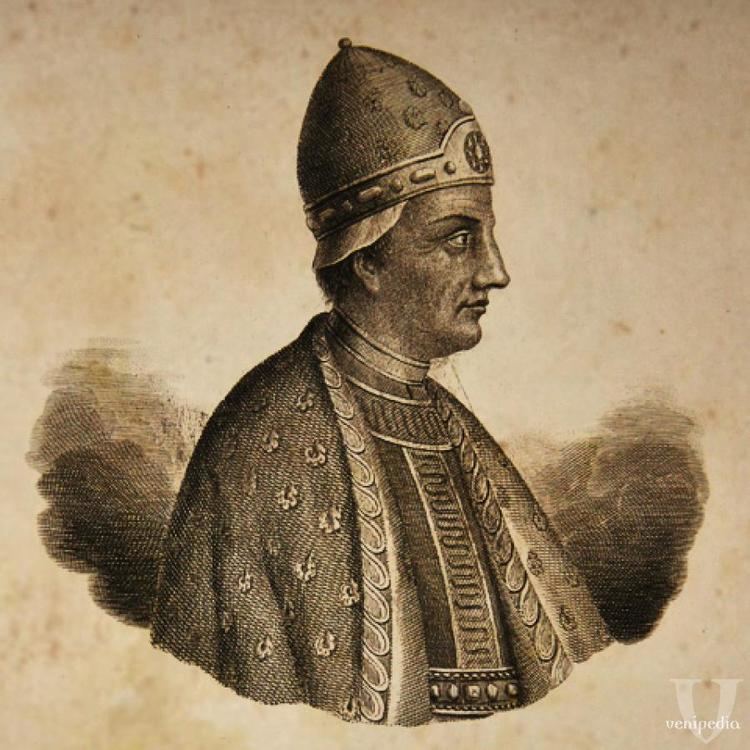
Although wanting to be independent from Byzantium, Orso Ipato still wanted to maintain peaceful relations with Leo III, agreeing to provide the empire ships as an ally as long as they kept their independence and because of this, Leo III acknowledged the Venetian’s independence. Pope Gregory II meanwhile continued to strongly oppose Leo III’s Iconoclasm by encouraging revolts against imperial rule in Italy and writing letters to Leo III condemning Iconoclasm and in response to this, Leo also in 730 doing as Emperor Constans II did back in 653 when arresting Pope Martin I, also sent some soldiers from Constantinople to Rome to arrest Gregory II but due to a storm, the ship was unable to cross the Adriatic Sea and in early 731, Gregory II died before he could be arrested. Following Gregory II’s death, Gregory III was elected as the new pope and he too opposed Leo III’s Iconoclasm excommunicating all those in Italy who destroyed icons, though Leo III gave up his plans in arresting the pope seeing it was useless, instead he later put the Church dioceses of Sicily and the remains of the Byzantine Balkans under the Patriarch of Constantinople and not the Patriarch of Rome or the pope, thus replacing their bishops with those under Constantinople, and here is where the soon-to-be schism between the Churches of Constantinople and Rome would begin.

In the early 730s, the Byzantines again did not get into much conflict with the Umayyad Arabs in the east as at this point, the Arabs focused more on fighting against India in the east, the Frankish Kingdom in the west, and the Khazars of the Caucasus Mountains in the north. In 732, the Khazar khan Bihar, son of the same khan Busir- whose sister earlier on married Justinian II- made a defensive alliance with Leo III’s Byzantium against the expanding Arabs and to fully seal it, Bihar sent his daughter Tzitzak to Constantinople to marry Leo III’s son Constantine who here was already 14 and quite overweight but already a learned scholar despite actually hating scholars and monks, though the young Constantine was also unstable and childish in personality- in this story’s case at least- but most importantly he inherited his father’s extreme disgust for icons as Constantine knowing theology more than his father believed too that God could not be painted as a human. Constantine too was believed to be a bisexual, which he is in this story, but when seeing the Khazar princess Tzitzak who here was 4 years older than him, he was struck by her exotic oriental beauty having long black hair, fair skin, and gray eyes.

In this story’s case, Tzitzak came to Constantinople in her native Turkic steppe people dress decorated with tons of gold and silver scales, as well as a headdress full of jewelry, and not speaking any Greek at all, therefore having an interpreter with her, and to all the people of Constantinople her appearance totally left everyone questioning it, although this was not the first time an emperor would marry a Khazar woman as Justinian II’s wife Theodora was a Khazar too, although when she arrived in Constantinople in 706, Theodora was already dressed in Byzantine robes as she had already married Justinian II prior to that. What was particularly intriguing to those who saw Tzitzak up close was the tattoos seen around her upper-body as was a nomadic Khazar custom. When being presented to the empress Maria at the baths of the imperial palace, Maria at first took a good look at Tzitzak privately to see if she was healthy in which she seemed to be, however when Maria took a deeper look, she was shocked to see all the tattoos on Tzitzak’s body as true enough to inspect if Tzitzak was healthy, Maria had to undress her as Tzitzak not knowing Greek therefore could not understand that she was told to take her clothes off.
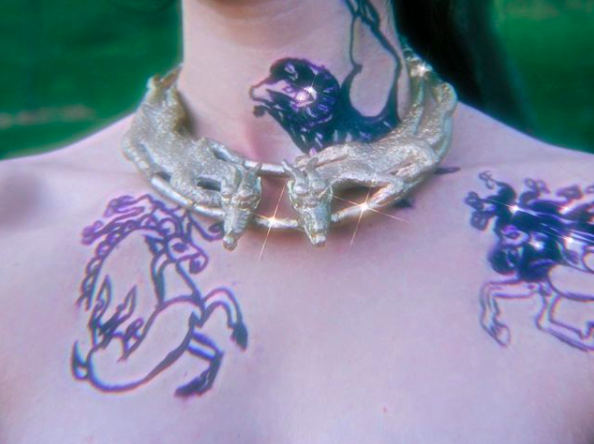
When seeing the rest of Tzitzak’s body with her clothes off, Maria then laid her hands all over her body and when feeling that her body was nice and attractive, she felt that Tzitzak was the right match for her son despite all the tattoos, but Maria approved of her more because of her well-behaved personality considering that she did not fight back when she was undressed and seen naked by a woman she just met. Later when Constantine came to see her at his bedroom, he was surprised to see the amount of tattoos when removing her dress as they were to sleep together naked, but for Constantine he’d rather have an exotic foreign wife than a Byzantine woman who he found boring and conservative in dress and appearance. The 18-year-old Tzitzak was then baptized and renamed to the Greek Irene (although she would still be known as Tzitzak in this story) and after being baptized she would marry young Constantine, then in the next years she would have to learn Greek which now completely took over Latin as the empire’s primary language. It also happened in 732 when the Umayyad Arab forces from Spain invaded the Frankish Kingdom but suffered a heavy defeat at the Battle of Tours to the Frankish army under their general Charles Martel thus putting a full stop to the Arabs’ advancement into Europe. As for Artavasdos, still the Armeniac Theme’s Strategos he would meanwhile remain in the Armeniac Theme’s capital of Amasea with Anna where they would have more children including another son named Nikephoros all while Anna being away from Constantinople for this story’s case would continue her art projects in painting icons away from her father’s eyes, though Artavasdos would see it but not react to it anyway, as he still respected whatever his wife did being happily married to her. The 730s meanwhile was not a much recorded part of Leo III’s reign and so here on a few occasions, Artavasdos and Anna with their children would travel to Constantinople for some family functions wherein for this story Leo himself would cook the flavorful Arabic food he grew up with but for his family this time, although in this story’s case nothing would go by pleasantly as envy and distrust would start erupting between family members especially between Anna and her father over their views on the use of icons, Constantine and Anna as Constantine would soon grow more and more envious of his older sister as she was more liked and got more praise and attention for her art and literary works while Constantine did not despite him also doing them, but the bigger hatred was of course between Artavasdos and Constantine as Artavasdos still felt betrayed by Constantine’s birth.

Artavasdos when in Constantinople would try to do whatever it took to get rid of the lazy and arrogant young Constantine, that Artavasdos when seeing him would mockingly call Constantine “Kopronymos” remembering the incident of Constantine as a baby shitting on the baptismal water thus angering Constantine, and at one point he intentionally pushed Constantine in the imperial palace’s halls making it look like it was an accident and another time, as Mario added Artavasdos would accuse Constantine of stealing his jewellery telling it to Leo III himself, except Leo here refused to believe it saying his son would not do such a thing. Meanwhile, Leo III’s war on icons was still brewing stronger especially in Constantinople that not a day would go by without soldiers looting churches to confiscate icons and bonfires in almost every square of the city wherein icons were burned much like in Nazi Germany where books were burned in bonfires, while Leo III too would have the previous coins of Justinian II with Christ’s image that were still around melted down to make new coins. When in Constantinople seeing icons burned in these bonfires, Anna had enough of her father’s useless and superstitious policy of destroying icons as Anna being a more educated person knew the icons had nothing to do with the empire’s setbacks.

Here in 735 for this story’s case, Anna encouraged by her mother Maria had decided to save icons from destruction, thus at the middle of the night she with a group of local women from Constantinople, the same ones who killed the palace guard officer back in 726 would horde the undestroyed or even broken icons while the city guards were asleep, and would then hide them all in the underground 5th century Cistern of Theodosius which they would use as their base wherein the women would restore icons at midnight. Anna had also come up with a plan for the remaining people who owned icons which was to hide them under their clothes, which is what most monks and nuns did when fleeing to Italy in order to not get caught possessing illegal icons. Meanwhile, not all religious icons could be restored since a lot which were already painted in the walls of churches or in mosaics were damaged in a way that their faces were removed leaving an empty blank spot, and restoring them would definitely lead to being arrested at the spot. While in the Armeniac Theme, Anna would also travel to Cappadocia, the perfect place to hide icons especially in the deep and labyrinthian cave systems there wherein people actually lived and there, the people in which most were still for the icons would restore them there, or even make new ones.
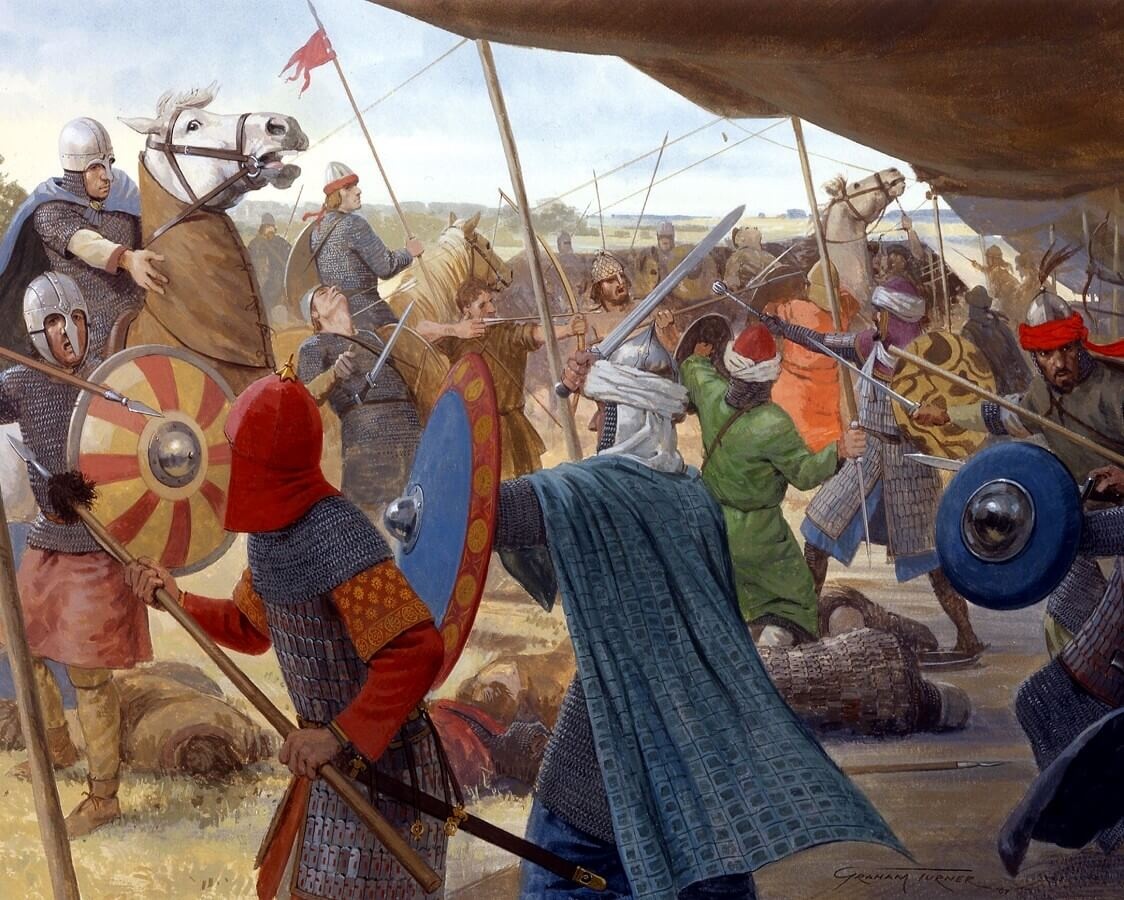

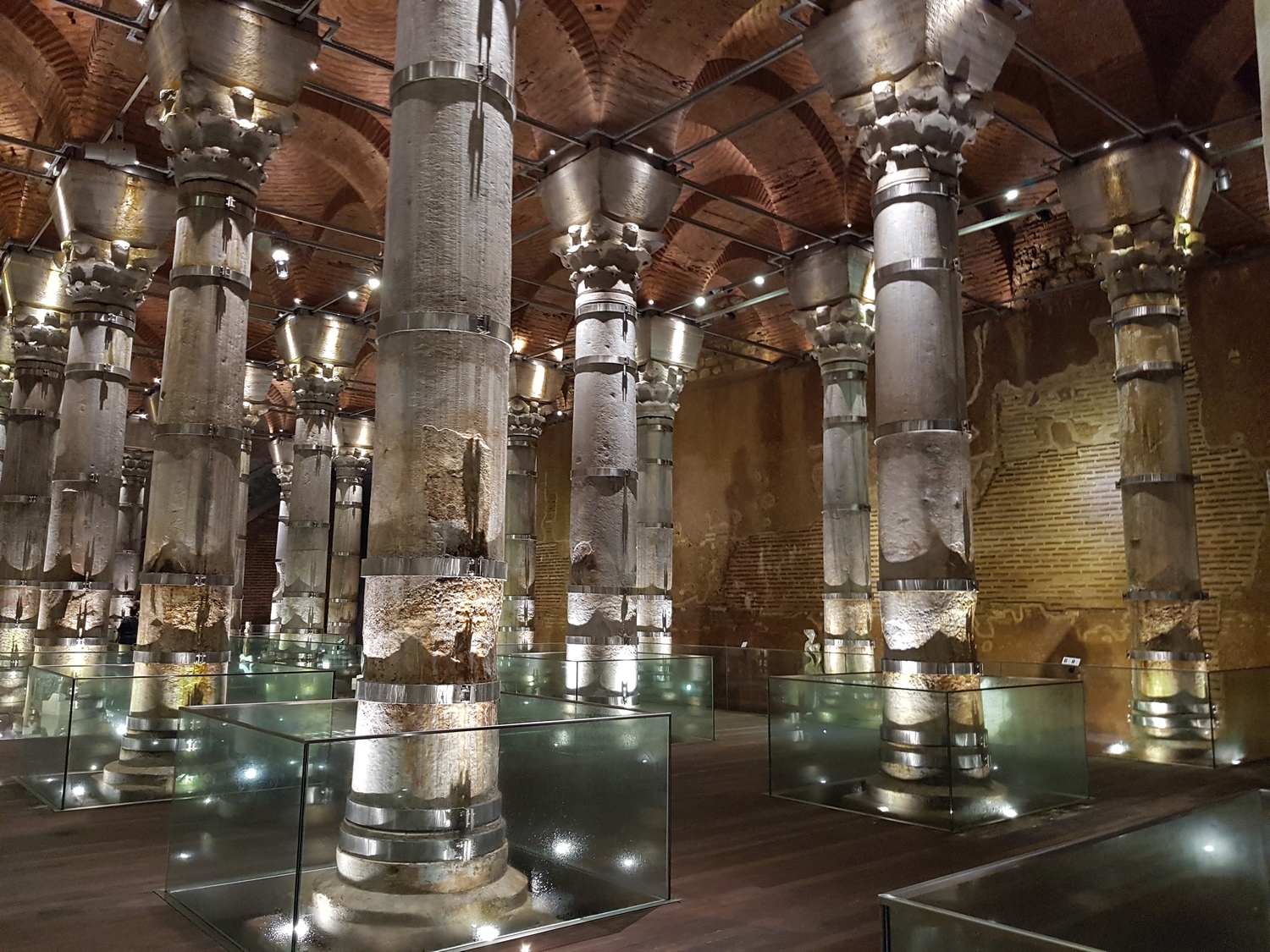


The secret resistance movement led by Anna in this story’s case would soon grow larger with more people joining it for the sake of restoring valuable icons that artists worked so hard to make, though neither Leo III nor Constantine nor even Artavasdos knew of Anna’s movement, although Artavasdos and Anna’s sons Niketas and Nikephoros soon will and would join their mother’s cause against their grandfather. Now on the other hand, the Arabs won a major victory over the Khazars in 737, thus the Arab forces resumed their raids into Asia Minor attacking in two sides although never intending to attack Constantinople again after the failure of 718. Back in Constantinople, Constantine by here was now no longer a child but in mentality he still was, especially in how he envied his older sister Anna as she got more attention than him by the palace officials and the people of Constantinople. As an Iconoclast and artist at the same time, Constantine in this story’s case developed his own simplistic style of art mostly consisting of symmetrical crucifixes with no images, while Anna made very intricate icons or art depicting nature which her brother and father definitely saw as it had no religious images on them, but Constantine surely envied his older sister’s more superior style in art that pleased a lot of people more than they did with his work.

Constantine and Anna too were musicians skilled in playing the lyre although the people cheered more for Anna who sang with a very excellent voice, again fuelling Constantine’s envy and hate towards her. Now in personalities they were so far apart as Anna was a serious and mature person while Constantine was impulsive and immature, and Anna being calm as usual would often remind him to stop envying as not everything is a competition and scoring points do not matter, although Constantine and Anna kept quarrelling nonstop to the point of slapping each other. Constantine could still not yet get over Anna, so one day in 740- in this story’s case- after drinking at a tavern, he gathered a group of thugs from the tavern to locate Anna’s base as Anna was back in the Armeniac Theme here. Constantine and the thugs managed to find Anna’s base at the Cistern of Theodosius where they looted all the icons under restoration there as no one was there and in an act of revenge, Constantine had some of them burned, and another set of icons in which he saw Anna’s name on them personally destroyed by himself. In the gardens of Constantinople’s imperial palace, Constantine himself in a mental breakdown as Mario put it personally destroyed the icons his sister made by stepping on them, slamming them against the courtyard columns, breaking them with his knees, and even urinating on them, and here his father caught him right at the moment doing that. Leo III caught Constantine screaming and cursing countless times thus asking Constantine what was wrong and Constantine clearly kept screaming “Anna you double-crosser, this is what you deserve!”, and here Leo saw the icons his daughter had made or restored and was not surprised as he always argued with her about icons, though Leo still did not know Anna was leading a secret resistance against Iconoclasm, but knowing how Constantine felt, Leo told him that he felt this kind of way before back in Justinian II’s 2nd reign when Leo as Konon then was betrayed by the emperor who he thought put all his faith into him when Justinian II stranded Konon across the snowy Caucasus Mountains before meeting Maria and Anna’s birth. Leo here told Constantine he would get his chance to prove himself right here by going to battle as an Arab army had breached into the Anatolic Theme in Asia Minor which needed to be driven away. Leo III like in real history here one more time led his army mostly consisting of the Cataphract cavalry in battle, and this time with his son and co-emperor Constantine by his side confronting the Arabs at the Battle of Akroinon just south of the Anatolic Theme’s capital Amorion and here, the Byzantines would again defeat the Arabs killing 13,000 of them including the Arab generals. This battle then turned the tide of war against the Arabs and with the success here, Leo III believed that God was now on the side of the Byzantines for getting rid of unholy icons while Constantine would here gain the popularity he so wanted as the army would now praise him for his bravery in battle. Although the Byzantines won a major victory, in October of 740 a great earthquake struck Constantinople destroying a lot of buildings while the Hagia Eirene church was severely damaged too, and so were the Theodosian Walls, while the large statue of Constantine I above the Column of Constantine fell off as well. Now those who supported the icons including the empress Maria here thought that this earthquake was punishment from God for destroying holy icons, and following the earthquake Leo III proceeded to rebuild the land and sea walls but was here beginning to grow worse in health.

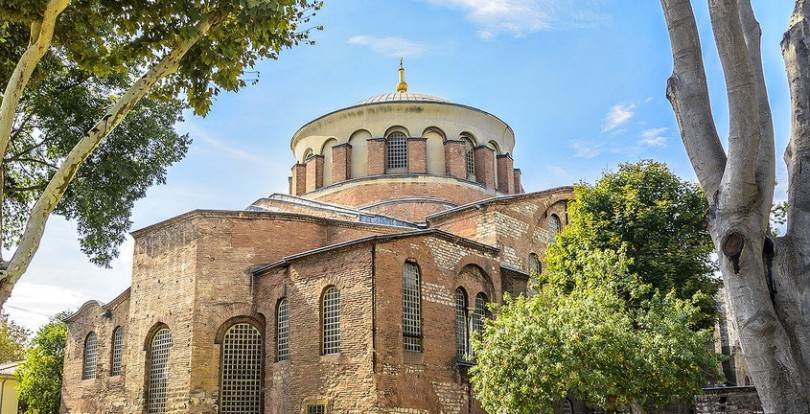
Watch this to learn more about Leo III and his reign (Thersites the Historian).
The Climax- War of the Emperors (741-743)

Following the victory of the Byzantines at the Battle of Akroinon in 740, a period of stability for the empire and the Thematic System would begin, and after repairing the damage on Constantinople from the recent earthquake, Leo III would no longer be able to function well anymore and so here he reassigned Artavasdos to the Opsikion Theme closer to Constantinople to be its Komes– as this Theme’s general was not known as a Strategos- moving his family there except for his eldest son Niketas who was left behind in the Armeniac Theme replacing his father as its Strategos at only 18. By this point in 741 when moving to the Opsikion Theme, Artavasdos and Anna had a total of 9 children as it is recorded that after Niketas and Nikephoros, they had 7 more children although their names and genders are not recorded, so for this story’s case 3 of the 7 were boys and the 4 were girls. Now on June 18 of 741, Emperor Leo III the Isaurian formerly known as the Syrian shepherd Konon had died at 56 from complications caused by his health condition of edema being the first emperor since Constantine IV in 685 to meet a peaceful end, though Leo III’s legacy of Iconoclasm would live on now that his 23-year-old son Constantine V being his co-emperor immediately succeeded to the throne crowned by the Iconoclast patriarch Anastasios, while Constantine’s 27-year-old wife the Khazar Tzitzak who now was becoming fluent in Greek and had given up her Khazar clothes and now wearing Byzantine ones was crowned as his empress or Augusta.

Artavasdos here had the worst day of his life when Constantine V was crowned as the empire’s sole emperor and so Artavasdos rather than attending the coronation in the Hagia Sophia in Constantinople went hunting alone in the Opsikion Theme- in this story’s case- while Anna and their children attended. Here Artavasdos was already 54 but still looking as young and strong as he was when helping Leo III come to power in 717 with long dark hair and a long beard, while Anna here at 33 despite having already 9 children was still looking young and beautiful as ever, and Constantine V at 23 looked very young too with thick and long dark curly hair and a short and stocky stature like his father, though he was quite overweight and bad in posture. Constantine V spent the first few months of his reign in 741 consolidating his power and continuing enforcing the Iconoclast policies of his father, and true enough soldiers continued their constant raids into houses and churches across the empire confiscating icons and burning them. While the war on icons continued to rage on, Anna and her resistance movement of women still continued to horde and restore icons in the middle of the night. Constantine V now had everything he wanted as emperor, and almost every night he would host lavish and wild parties at the imperial palace dancing and drinking to the point of getting hangovers. As a bisexual, Constantine enjoyed having young men and women at his parties barely clothed except for a toga over their underwear and in these parties, Constantine too would get high by inhaling a flower that could be used as a drug from Asia Minor. Both Anna and Artavasdos now had their own reasons to hate Constantine as not only was he an Iconoclast extremist and an obstacle to Artavasdos, but he was also an excessive young man that cared more about pleasure than for the good of his empire and so here in their house in Constantinople, Artavasdos when at his bedroom with Anna told her that it was time to get rid of Constantine for the good of the empire by poisoning him, and Anna was also intent on doing it as part of revenge on him for destroying her icons the previous year. Artavasdos here also told Anna in private that Constantine V needed to go as they both knew Constantine had a health condition which was epilepsy, in which was a valid reason to make him not completely suitable to be emperor as just a simple health condition could discredit someone from being emperor, as after all the emperor needed to be seen as a perfect human, and Artavasdos having no kind of health condition or deformity would be a perfect candidate for the throne. In this story’s case in one night in March of 742, while Constantine V was having another wild party in the palace, Anna decided to attend it too as being the emperor’s sister, she would definitely be allowed entry and so in her house, she dressed up for the occasion in more lose and revealing clothes as for Constantine, the more skin showing the better. The dress Anna put on here was simply a red silk Ancient Roman style dress which was just an easy to put on red sleeveless tunic just fastened above the shoulders with a pin, and a red toga cloth known as a Stola draped over it with only two belts to hold up the dress where one was fastened below the bust and the other at the waist, and first of all before putting on the dress, she put on her underwear which was basically a cloth band wrapped around the bust to simply hold it without shoulder straps- as depicted in a 4th century Roman mosaic- and after Anna tightened the band around her bust, she put on the red dress and when wearing it, she realized how comfortable it was compared to the more conservative and difficult to wear tight Byzantine style dresses of her time.
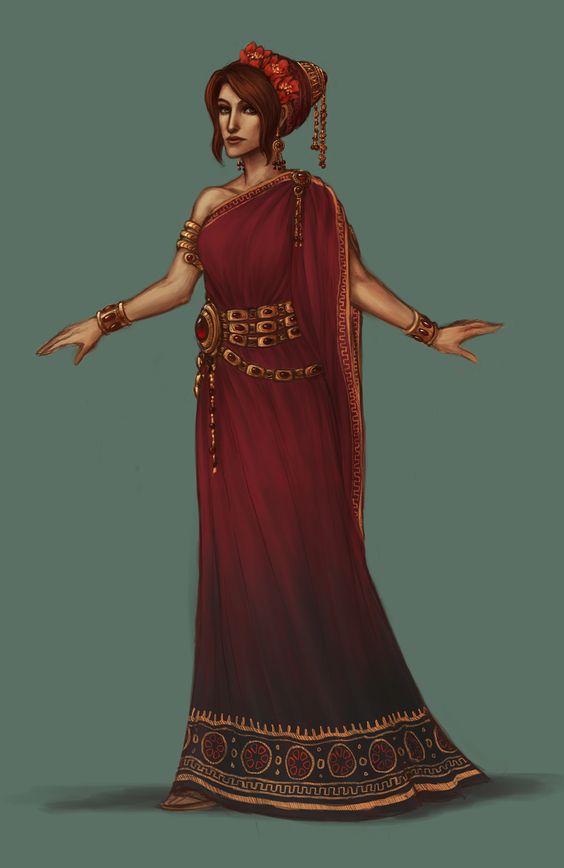
While Anna was dressing up, Artavasdos came in giving her the vial of poison which Anna put deep inside her underwear, which she tightened more to hold in the poison vial, and it was here when she told Artavasdos the whole truth that she was in fact leading a the resistance against Iconoclasm, and Artavasdos did not really seem to mind as he never really cared about Iconoclasm anyway and would just do whatever it took to get rid of Constantine, and it was here at this party through Anna that would be his first opportunity to get rid of Constantine as Leo III was now dead and Artavasdos with Leo still alive would not do any harm to his family. Before leaving Artavasdos kissed Anna and brushed his hand down her hair to her face, neck, upper chest, and finally to her breasts which he held on to tightly to make sure the poison vial stayed in place inside her underwear, then he brushed his hand down to her stomach holding on to it for a few seconds, and then he kissed her one more time in her breasts then in her lips before she left. The party then went on in the imperial palace and Anna was able to enter freely looking for the drinks being served to Constantine, although she failed to carry out the plan as she soon enough couldn’t help but indulge herself in the alcoholic drinks and later, she got too drunk that the poison vial slipped out of her dress into a couch, then she later crashed into one of the beds nearby waking up the next day when the party was over. The next day as the palace staff cleaned up the room where the party the night before was, they found the vial of poison and a headband and when Constantine saw both items, he knew the headband belonged to Anna, therefore Constantine concluded Anna was attempting to poison him. Anna however happened to be inside the palace and when woken up by the palace staff cleaning it, she was immediately brought by them to Constantine in her sleepwear who then pulled her hand dragging her to the palace courtyard where he had the palace guards chain her up to one of the columns and afterwards tear off the back of her nightgown, while Constantine pulled out a whip ready to whip her himself. Now as emperor, Constantine had the right chance to punish his older sister that made him feel so miserable, and here he viciously whipped Anna’s back on and on, and as he remembered all the moments Anna got all the attention instead of him, he increased the power of the whipping until Anna passed out, and at the end Constantine gave Anna 30 lashes until her back was filled up with bruises, although there was not much bleeding as it was only a soft leather whip that was used on her. The first people to pick up Anna later on and help her recover were her two younger sisters Irene and Kosmo, as well as her mother Maria who put her in a cold bath in their part of the palace where Maria looking at her daughter in the bath saw all the wounds at her back. Anna waking up felt some kind of discomfort as her mother and sisters were present while she was naked in the bath, but she told her mother here exactly what happened and that Constantine is insane, while Anna also told her mother that Constantine does not know yet she is leading the resistance against Iconoclasm, but if he finds out he’ll have everything they worked so hard on to restore destroyed, and them all executed regardless if they’re his family members. Maria then told Anna here that it was now time to rise up against Constantine V and replace him with Artavasdos, but it was also hard for Maria as this meant getting rid of her son, although she asked that Constantine should instead suffer a more humane punishment which was to just have his tongue cut off if Artavasdos succeeded in his rebellion. Some nights later after Anna recovered from her wounds, while she and Artavasdos were at their bed in their house in Constantinople, Artavasdos at the bed while looking at the wounds in Anna’s back as she was lying down completely naked with only the blanket covering her front told her some valuable information he heard from Constantine V, which was that the reigning Umayyad Arab caliph Hisham ibn Abd al-Malik launched another attack into Asia Minor and that Artavasdos was asked to take part in the counter-attack by leading the Opsikion Theme’s troops. Here, Anna told Artavasdos that this was the right opportunity to strike against Constantine V by doing it in the middle of battle abandoning Constantine V’s forces there.


As the summer of 742 came, Artavasdos with the Opsikion Theme army joined Constantine V as they marched east out of Constantinople into Asia Minor to confront the Arabs while Anna right here organized a meeting with the members of the Iconodule resistance at their base, the Cistern of Theodosius where she asked everyone if they were all in favor of Artavasdos as emperor in which all said yes, as they’d rather have anyone else other than the monster Constantine V. For the people that supported icons, Artavasdos was the perfect choice even if he was not really a strong believer of icons, but for them it would seem like he was not a usurper with no legitimacy as he had family ties being Leo III’ son-in-law, and was also a disciplined and no-nonsense soldier and administrator unlike the unstable and somewhat insane Constantine V who they were now all comparing to all the lunatic and bloodthirsty Roman and Byzantine emperors of the past like Caligula (r. 37-41AD), Nero (r. 54-68AD), Commodus (r. 180-192), Phocas (r. 602-610), and Justinian II. Together with Artavasdos in this campaign was his younger son Nikephoros who was being trained here by his father in battle, but right before they would all confront the Arab forces, when marching somewhere in the Anatolic Theme, Artavasdos and a few of his Cataphract cavalry soldiers charged right at the portion under Constantine V’s command by surprise wherein one of the commanders of Constantine’s bodyguard force named Beser was killed.

Artavasdos then shouted out loud to Constantine that Anna ordered this as she is leading the resistance against Iconoclasm, although Constantine here did not attack Artavasdos fearing Artavasdos’ forces will kill him first, so instead Constantine and the troops loyal to him fled the site retreating to the Anatolic Theme’s capital Amorion which was just nearby. Artavasdos together with Nikephoros after turning on Constantine V also did not continue with the campaign, instead they marched their forces back to Constantinople where Artavasdos was ready to crown himself emperor before Constantine could make it back there. When arriving back in Constantinople, both Anna and Patriarch Anastasios welcomed them, and here there was total shift in Patriarch Anastasios who from being a strong Iconoclast suddenly became an ardent supporter of Artavasdos, of Anna’s resistance, and of icons in general. Anastasios meanwhile just like Artavasdos never really cared much about Iconoclasm or defending icons, as he being the patriarch only wanted to be in favor of the reigning emperor no matter who whether Iconoclast or not, but when seeing for himself how much the people rallying under Anna were so ardent about icons, he felt their pain and therefore in an instant became totally on their side and a defender of icons. Artavasdos at 55 here was soon enough crowned as emperor dressed in the new imperial robes or the Loros Justinian II previously introduced, while Anna was crowned as empress or Augusta, and Nikephoros even though being their second son was crowned as co-emperor to fully secure Artavasdos’ branch of the Isaurian Dynasty as the eldest son Niketas was still over in the Armeniac Theme here at this point in 742, therefore there was no time to crown him as co-emperor as Constantine V could return at any moment. It is also debated by historians that Niketas may not be Artavasdos’ son with Anna but from a previous wife which is why he was not crowned co-emperor, although this is highly unlikely and this wouldn’t be the case for this story. After his coronation, Artavasdos was then backed by Anna’s mother Maria and younger sisters Irene and Kosmo who all encouraged him to take the title of “Protector of the Holy Icons” as by supporting the cause of the people for the icons or the Iconodules, his legitimacy as emperor would be more secure as majority of the people of Constantinople had backed him. Meanwhile in Amorion, Constantine V was still emperor but only there, as the people there especially the army with him and of the Anatolic Theme supported Iconoclasm therefore backing him. As it turned out, the soldiers that were in Amorion were mostly the same ones two years earlier at the Battle of Akroinon that helped Constantine and his father defeat the Arabs and remembering him well, they all rallied under him and so did the entire army and people of the Anatolic Theme. Constantine V here at least got the dream he wanted so much which was to have a great amount of popularity and these soldiers not only supported him, they pledged to fight and die for him and for the name of Iconoclasm as well. Constantine V though when in Amorion in this story’s case would also get some strange dreams, although this would be due to his growing addiction to the flower drugs he was taking, and as Mario put it here, Constantine one time dreamt that he was in his bedroom there in Amorion seeing Artavasdos in the bed next to him thinking it was real until waking up the next day seeing Artavasdos was not there. Artavasdos too experienced the same thing back in Constantinople, except instead he got a dream of Constantine overthrowing and blinding him- as what happened in real history. As emperor in Constantinople, Artavasdos’ first act was to restore all the icons to their rightful places as well as to repaint the frescos in which their faces were destroyed, and all this had to be done in so little time before Constantine V could come back, while Artavasdos too apologized to the people for what he did back in 726 in taking down the mosaic at the Chalke Gate saying he only did it because of his loyalty to Leo III. Under the guidance of Anna with her mother and sisters, a lot of these icons were successfully returned to their rightful places from being kept underground at the Cistern of Theodosius, while a lot of those that were destroyed were fixed to be as good as new again. At the same time, both Constantine V in Amorion and Artavasdos in Constantinople during the autumn and winter of 742 began preparing their armies for the ultimate civil war to come. Constantine further encouraged his soldiers by reminding them that they are fighting to get rid of Artavasdos and Anna who he called the “double-crosser” in his speeches, and this anger also further increased the morale of the soldiers as they knew from reports that they were rapidly undoing the Iconoclast policy of Leo III who was their hero. The armies of the Themes of Thrace and Opsikion would then switch sides to Anna’s resistance and Artavasdos, and so would the distant Armeniac Theme under Niketas who immediately got word from his father to join forces with him against Constantine V who meanwhile was backed by the armies of the Anatolic and Thracesian Themes all being loyal to the Iconoclast cause. By early 743, it turned out that almost the entire population of Constantinople especially monks, nuns, and women were all loyally behind Artavasdos giving him hope that he will defeat Constantine V, also because he had 3 Themes with him while Constantine only had 2 Themes.

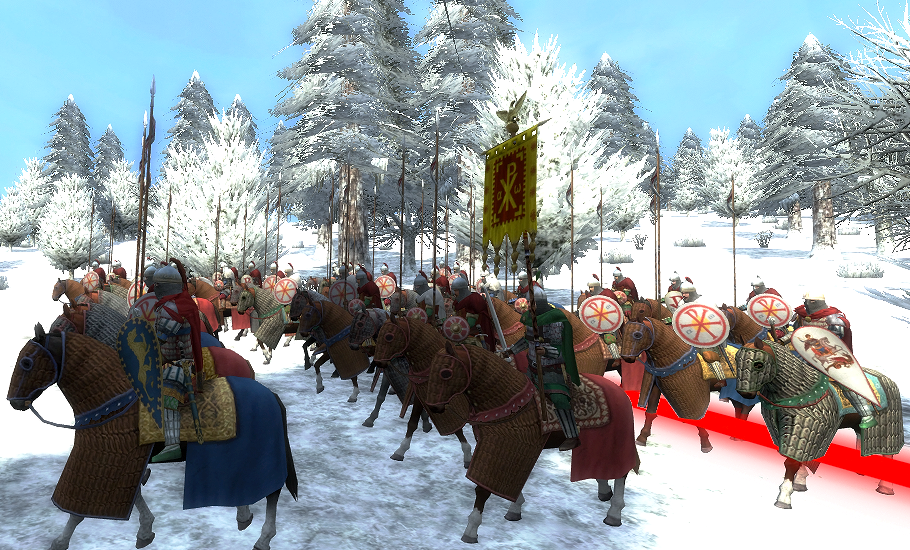

Watch this to learn more about Emperor Artavasdos (Eastern Roman History).
Over in Italy, in this story’s case Exarch Eutychius in 743 when hearing of Artavasdos being crowned emperor, he switched his support to Artavasdos and restoring icons even if he was against icons considering he a was loyal supporter of Leo III. Eutychius though would only switch his support since he desperately needed imperial support no matter from who, as Byzantine rule in Italy was almost completely lost due to the ambitious conquests of the Lombard king Liutprand that in 738 Ravenna was temporarily captured by the Lombards that Eutychius had to flee to the new Republic of Venice before recapturing the exarchate’s capital of Ravenna some years later.

It also happened that back in 741, the new pope Zachary was elected, and in 743 when hearing of Artavasdos coming to power and restoring icons, here in this story’s case he congratulated him agreeing to have the Church of Rome in good terms with Constantinople again. Soon enough, the message to restore icons were spread to the western parts wherein Leo III had previously replaced their bishops with Iconoclast ones, but with the Iconoclast policy gone under both Emperor Artavasdos and Patriarch Anastasios of Constantinople, the icons were freely allowed to be restored. Back in Constantinople, in this story’s case, Anna had managed to actually get Constantine’s wife Tzitzak who was left behind in Constantinople to support icons after having a couple of drinks together, and this would be possibly because women were more attached to religious icons than men. With the army of Artavasdos fully assembled, they all marched into Asia Minor under Artavasdos’ command while the Armeniac Theme’s army under Niketas would meet them along the way, although Artavasdos chose to attack Constantine V in waves but was not expecting that Constantine V led his entire army from both the Anatolic and Thracesian Themes to confront Artavasdos’ forces. The two sides met near the city of Sardis in Western Asia Minor in May of 743 and being outnumbered to the entire Thematic armies of Constantine V, Artavasdos’ and Niketas’ forces were defeated here, although both father and son still survived as Niketas fled north and Artavasdos back to Constantinople to gather the second batch of his troops.

3 months later, Niketas and his Armeniac Theme army was spotted and cornered in the town of Modrine near the Black Sea coast of Asia Minor, where Constantine with such a fury led a charge defeating the Armeniac troops, again forcing Niketas to flee. Niketas though would still manage to regroup his army and blockade the Dardanelles strait to prevent Constantine passage into Europe, but later on outside the city of Nicomedia on the way to Constantinople, Niketas lost again to his uncle due to Niketas being too young and inexperienced in fighting battles and when losing, Constantine captured his nephew Niketas himself personally beating him up to the ground, and later shipping him to Constantinople to be imprisoned. Having defeated Niketas, Constantine then crossed the Dardanelles Strait into Thrace and later arriving outside Constantinople’s walls laying siege to it. Constantine V though did not entirely lay siege but more so blockaded it by both land and sea and after some 2 months by November of 743, the defending army tired of being locked in surrendered thus allowing Constantine V entry, while Artavasdos together with Anna and Nikephoros made it in time to flee across the Bosporus to the Opsikion Theme, while Niketas was left in a prison within Constantinople.


When the city garrison surrendered to Constantine V who now entered Constantinople in the new uniform of the imperial Loros after more than a year of losing the throne, he was beyond disgusted to see how much icons Artavasdos and Anna restored, and the worst part for him- in this story’s case- was seeing his name with the title “Kopronymos” graffitied in the city’s walls which was the nickname people that hated him used to put him down, reminding him of defecating in the baptismal water as a baby.

Constantine though did not yet destroy the icons that were just restored, instead he first focused his attention on rounding up everyone he knew that was loyal to Artavasdos and Anna, mostly being monks and women in the resistance movement and had them all either blinded, their noses cut off, or executed in the most brutal ways such as being sawn in half or burned alive right in front of him as he celebrated with drinks and music. The next person Constantine targeted was Patriarch Anastasios who Constantine saw betrayed him and Iconoclasm by switching sides to Artavasdos so here like in real history, Constantine had Anastasios’ robes torn off and put on the back of donkey to be paraded around the streets of Constantinople, wherein those loyal to Constantine all laughed at the site mocking Anastasios.

Constantine though like in real history here did not fire Anastasios, instead he only punished him by humiliation and afterwards chose to keep him as patriarch as he could not find any replacement, and just wanting to be in favor with the reigning emperor again, Anastasios chose to switch his support to Constantine V again. The next move Constantine V planned was to install a large mosaic of a black cross which was to replace an old mosaic with an image of Christ for the apse of the Hagia Eirene, which was here under repair after the damage caused to it by the earthquake of 740, but before he began working on it Constantine returned to his wife Tzitzak in the imperial palace before going to his bath alone as a way to relax now that he had taken back the throne. When in his baths, as Mario again put it, Constantine again went back to inhaling the drug flowers he so loved that soon enough he began hallucinating things including the time he was a baby defecating on the baptismal font, his sister Anna getting more attention for her works, the icons of Anna that he broke and urinated on, how Anna tried to poison him, and lastly he saw Artavasdos again right next to him this time with a dagger about to slit his throat, although later Constantine snapped out seeing this was only a hallucination.

Although right when Constantine woke up from his hallucination- in this story’s case- his 3 sisters Anna, Irene, and Kosmo all surrounded him, and out of fear thinking they were there to strangle him in his bath under Artavasdos’ orders, Constantine immediately told Anna he was sorry for hurting her before, but Anna replied telling him he was only hurting himself with what he did to her by only making his hatred consume him. Anna then told Constantine that Artavasdos sent her back there offering to settle the claim to the imperial throne with a personal duel between Artavasdos and Constantine to the point of only making one submit to the other, which would allow Constantine to prove himself once again. Constantine at first did not want to leave his bath, but Anna feeling a sense of anger towards him put her hand in the water of the tub roughly grabbing Constantine’s private part, and so Constantine was now willing to fully have revenge on Artavasdos and agreed to the duel, thus putting on his golden imperial armor with a purple cape included and readying his sword, the curved single-bladed Byzantine saber known as the Paramerion. In real history, after fleeing Constantinople in November of 743, Artavasdos sought refuge in a castle in the Opsikion Theme but was immediately caught there by Constantine V’s soldiers and brought to Constantinople where he together with both sons Niketas and Nikephoros were blinded and sent to live out their lives in the small Monastery of Chora in the outskirts of Constantinople, where all 3 would die possibly not so long after from the infection caused by the blinding, thus ending the rebellion and short reign of Artavasdos.

In this case however, Constantine himself travelled to this castle across the Bosporus together with his sisters who brought him to Artavasdos who was already waiting for Constantine in his imperial armor above the castle walls. The duel between both emperors would begin with Constantine striking with his sword first which Artavasdos immediately dodged, and watching from the other side of the walls opposite to them were Anna, Irene, Kosmo, and Nikephoros while Artavasdos’ loyal troops stayed below inside the castle, and Constantine’s troops outside. Both Artavasdos and Constantine here both duelled each other with their Paramerion sabers, and for a long time neither of them got the upper hand as both blades kept parrying each other, although Constantine managed to head-butt Artavasdos while Artavasdos in return swept Constantine’s leg pinning him down, but Constantine later managed to cut Artavasdos’ leg with his sword injuring him. Constantine then used the pommel of his sword to beat Artavasdos’ face into a pulp, but Artavasdos still fought back by choking Constantine and while trying to pin him down, he kept taunting Constantine with insults including again calling him “Kopronymos” which only made Constantine angrier therefore breaking free from Artavasdos’ choke hold making Artavasdos drop his sword, and then pinning Artavasdos down to the ground. Constantine then dropped his sword and placed his foot on Artavasdos’ neck as again a sign of having conquered him, though Constantine took too much time doing that to show everyone around him that he and Iconoclasm had still won, thus the soldiers loyal to Constantine outside the castle walls all cheered, but by taking too much time showing off to everyone, Artavasdos enraged as ever at Constantine for beating him managed to break free from Constantine’s foot, got up, hit Constantine’s waist hard with his elbow, kicked Constantine in the stomach, and kicked Constantine again, though the second kick resulted in Constantine falling off the railing of the castle wall. Constantine then fell off in what would be equivalent to 3 floors hitting his back right at the ground of the castle’s interior to the point of being critically injured and in a coma, while the cheers of his soldiers outside the walls suddenly stopped, and Anna being shocked at the sight of her brother falling off the castle walls screamed “Artavasdos what did you do!”, while Artavasdos also being shocked at what happened fell to the ground exhausted. The soldiers loyal to Constantine meanwhile in the panic all decided to switch their support to Artavasdos, but at the same time they also carried Constantine’s body away while Anna put her hand on his neck noticing his pulse was still beating despite him being unconscious. Later on, everyone who was at that castle including Artavasdos all returned to Constantinople quietly as none of them expected the duel to end with Constantine critically injured and near dead. When hearing of what happened to her son, Maria refused to speak to Artavasdos and took a vow of silence refusing to even lay her eyes on him for her entire life as he almost killed Constantine who Maria only wanted slightly injured to make him unqualified to take back the throne. Now that Constantine despite surviving the fall was completely paralyzed and had to be confined to what would be here the Chora Monastery, and by being completely paralyzed there would be no more chance at all for Constantine to return to power. Artavasdos meanwhile as the full emperor again would keep Anastasios still as patriarch, who would again shift his loyalty back to Artavasdos and icons, then Artavasdos too would establish his branch of Leo III’s Isaurian Dynasty now making his other son Niketas who would here be released from prison as his other co-emperor together with Nikephoros, and now fully taking back the throne, Artavasdos would issue a decree saying that all icons in the empire are to be restored.

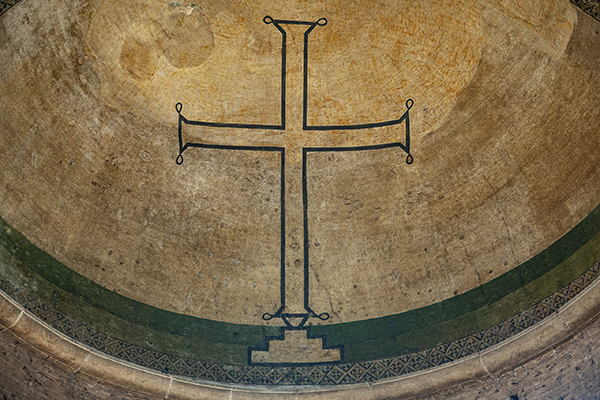
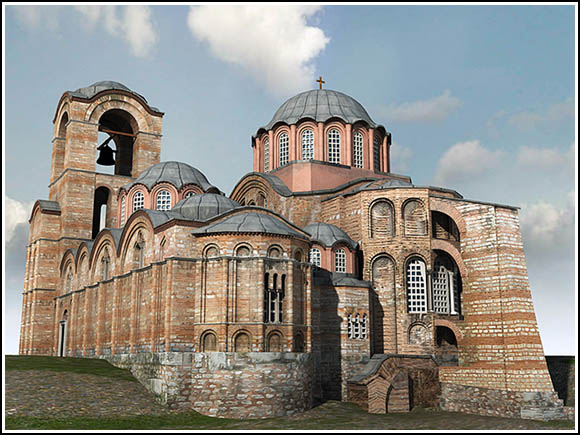
Aftermath and Conclusion

In real history the failed rebellion of Artavasdos and his civil war against Constantine V showed that the empire was literally split in half over the issue of icons, so it was basically Byzantium vs Byzantium where icons were still popular among one half of the population and despised by the other half. Constantine V in reality saw the uprising of Artavasdos which he defeated as a sign to make him have a firmer stance on Iconoclasm which he took to an even higher level, later passing death sentences on those who possessed icons as the issue could lead to civil wars like the one he faced from 742 to 743 that nearly cost him his life.
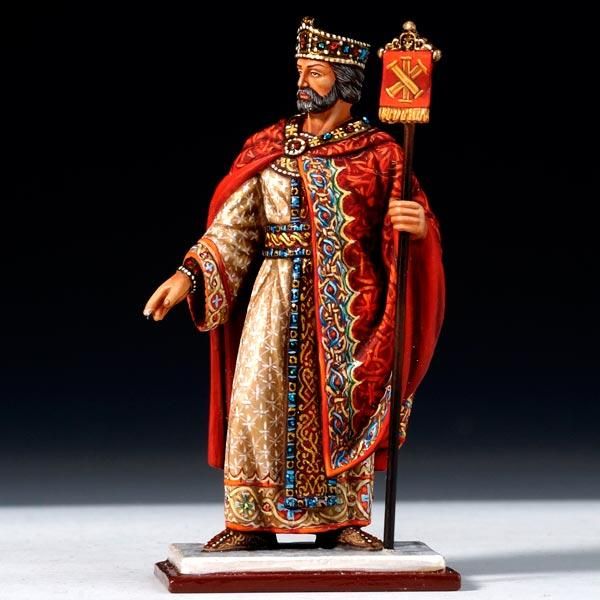
In real history, Artavasdos and his sons Niketas and Nikephoros were all publicly blinded in the Hippodrome and all banished to the Chora Monastery in Constantinople whereas Anna and the rest of their 7 children would all follow them there to retirement, where Anna would be the one caring for her blinded husband and sons who would die not so long after, possibly only 2 years later in 745 from the infection caused by the wounds of the blinding. The same historian Theophanes the Confessor who was hostile to Constantine V as well as to his father Leo III and Justinian II before him mentions that 30 years after Artavasdos’ rebellion failed (773), Anna returns to the picture now as an old woman while Constantine V was still in power, and here he forced Anna to dig up the bodies of her husband Artavasdos and her 2 sons with him, using her cloak to carry their bodies, and dump them in a mass grave as a way of condemning them as heretics for supporting icons, while Anna afterwards disappears from the pages of history. Constantine V in 754 in real history called for a Church Council at Hieria, found right across the Bosporus from Constantinople attended by hundreds of Iconoclast bishops and priests from all over the empire wherein the full-scale persecution of Iconodules was declared.
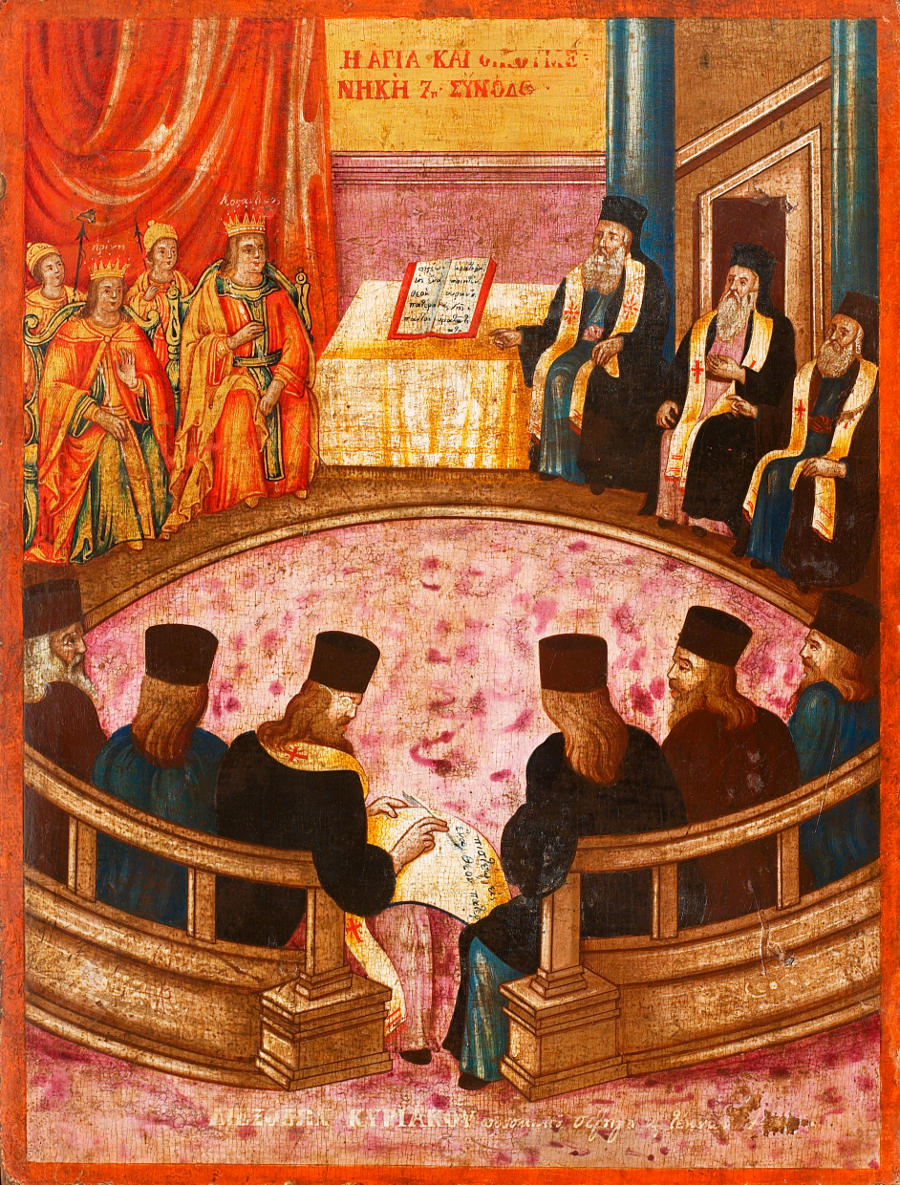
As emperor, Constantine V’s Iconoclast policy was even way more extreme than his father’s as not only did he pass death sentences on those who supported icons especially on those who restored them or encouraged to restore them, but he hating scholars and monks primarily targeted them, thus he had monasteries raided to confiscate icons and their hidden wealth to fund his armies, and had many monks and nuns blinded as well. Another thing Constantine V did as a result of the rebellion of Artavasdos which he crushed was that he divided the troublemaking Opsikion Theme which Artavasdos was in charge of into two halves as a way to weaken its power; the first one still being the Opsikion Theme which had Nicaea as its capital, and the other half then became known as the Optimatoi Theme with Nicomedia as its capital. As part of creating the new Optimatoi Theme, Constantine V had also introduced a new unit in the Byzantine army which was the Tagmata (singular: Tagma), the new elite force in charge of protecting the emperor in battle which was to be loyal to the emperor at all times, which Constantine V created in response to Artavasdos’ failed rebellion, and the Tagmata were then assigned to the Optimatoi Theme as it was directly across Constantinople.

On the other hand, other than viciously persecuting Iconodules and carrying out an extreme policy of Iconoclasm, Constantine V was a very popular emperor especially among the army as he was most of the time victorious in battle against the Arabs and later against the Bulgars up north, and also because he gave free food to the people of Constantinople, possibly as a way to compensate for his persecutions on Iconodules. Now back to the situation of the Arab Umayyad Caliphate, as their armies were raiding into Asia Minor by the time Constantine V and Artavasdos fought the civil war with each other, they never really penetrated as far, as by this time the Umayyad Caliphate was already weakening and by 746 once Constantine V finished the civil war, he turned his attention to the war against the Arabs winning a great victory and even recaptured his father’s hometown of Germanikeia in Syria which had some time earlier fallen to the hands of the Arabs. Following this victory, the Byzantine navy defeated an Arab fleet near Cyprus in 747 while in 752, Constantine recaptured a great number of territories in Eastern Asia Minor from the Arabs and resettled the people there to the Balkans right at the border with the Bulgarian state. Meanwhile, in 750 the Umayyad Caliphate after another civil war was destroyed and replaced by a new Arab power being the Abbasid Caliphate moving the capital from Damascus to Baghdad, which relieved the Byzantines as the new Caliphate’s center was farther away and that it would take some time for this new power to consolidate its rule over the Arab world, though in 751 the new Caliphate won a victory over the forces of the Chinese Tang Empire at the Battle of Talas in Central Asia while in the far west, Spain which fell under the rule of the Umayyads still remained an Umayyad state in exile based in Cordoba refusing to be under the Abbasids.

However in the remains of Byzantine Italy, not all went in favor for the Byzantines and by 751 with Italy being neglected by Constantine V and Leo III before him as it was too far away, the Exarchate of Ravenna came to an end when Eutychius its last exarch surrendered Ravenna to the Lombards as it proved already too impossible to hold. The fall of Ravenna to the Lombards though was also another blessing in disguise, as if it stayed longer under Byzantine rule, the valuable mosaics there such as those of Justinian and Theodora which had their faces on it would have been destroyed, and the Lombards not being Iconoclasts would keep them that way when holding Ravenna. With the emperor neglecting Byzantine Italy as their problems were mostly in the east, the pope had also begun to lose faith in the Byzantines, also because of their Iconoclast policy, so for protection against the ambitious Lombards, the pope would have to turn to the new powerful Frankish Kingdom up north in today’s France which was willing to fight the Lombards and could be more trusted by the pope, as the Franks unlike the Byzantines did not destroy icons.

From 755 onwards, Constantine V with the threat of the Arabs dealt with turned his attention north to wage war against the Bulgars who also declared war on them when feeling suspicious of Constantine V fortifying the Byzantine border with them. In this war, the Byzantines won 3 major victories over the Bulgars first in 756, then in 759, and lastly in 763 and with all these victories, Constantine surely believed that Iconoclasm was definitely a successful move. Constantine V later planned another attack on the Bulgars again in 775 but failed as he died that year at the age of 57 and at his death, he left the empire stronger than he had founded it. According to the Russian Byzantinist historian George Ostrogorsky (1902-1976), Constantine V had an equally positive and negative reputation as on the positive side he scored countless victories against the Arabs and Bulgars making him very popular with the army especially, but on the negative side he was a more vicious Iconoclast than his father, that the same historian Theophanes the Confessor described him in the same vicious way as he did with Justinian II saying Constantine V was a “monster” and even a “precursor of the Antichrist” because of how extremely he went against icons, therefore because of his extreme Iconoclasm he would forever be remembered as “Kopronymos” or the “shit-named” despite him still being a capable emperor.
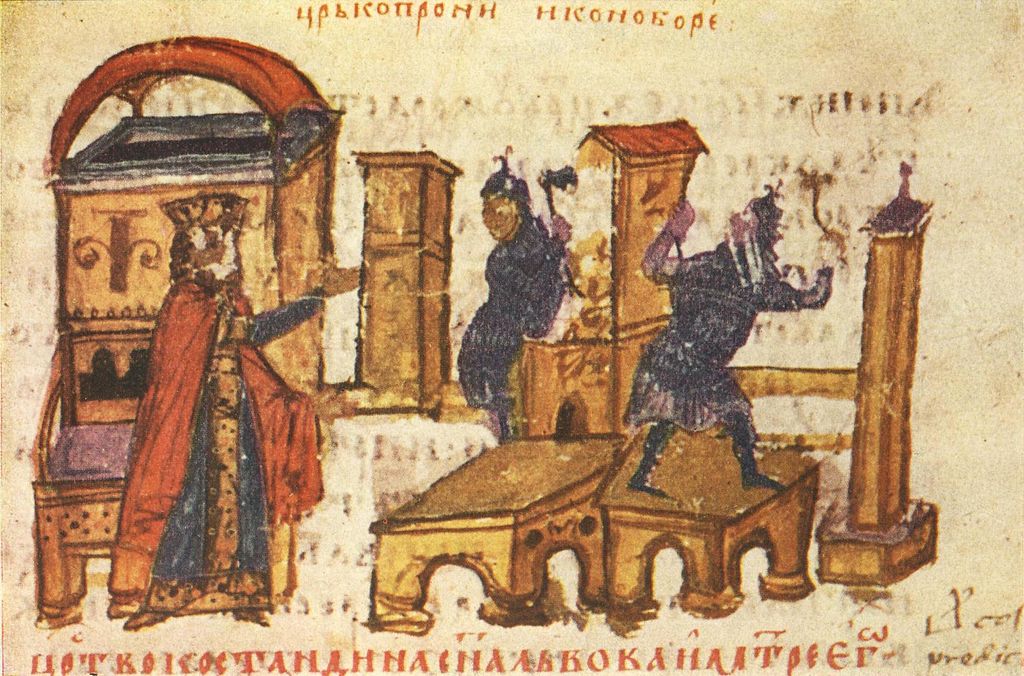

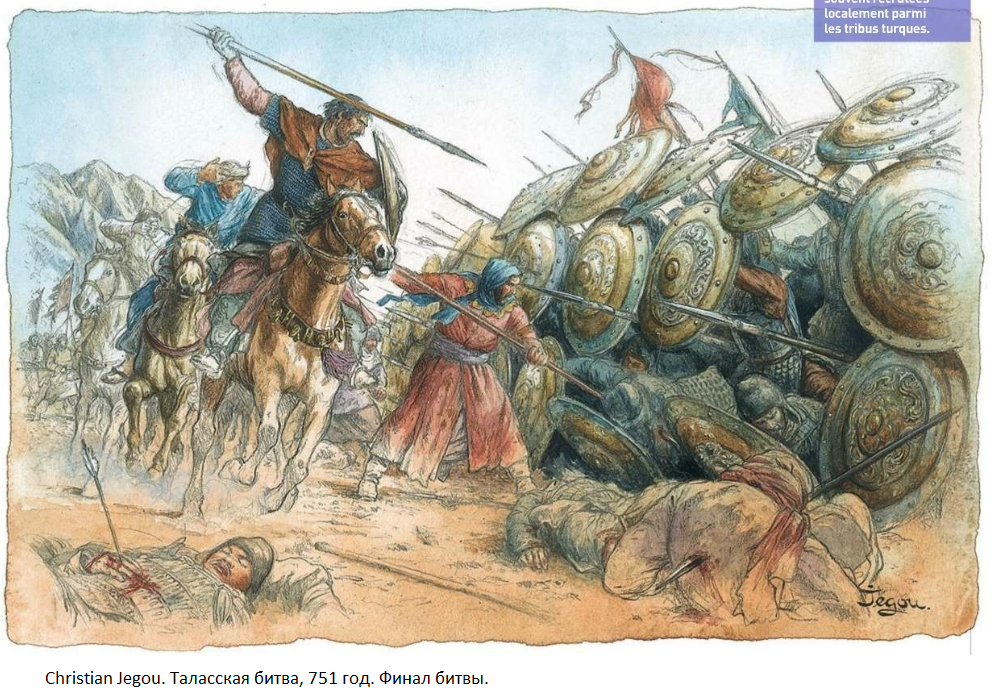

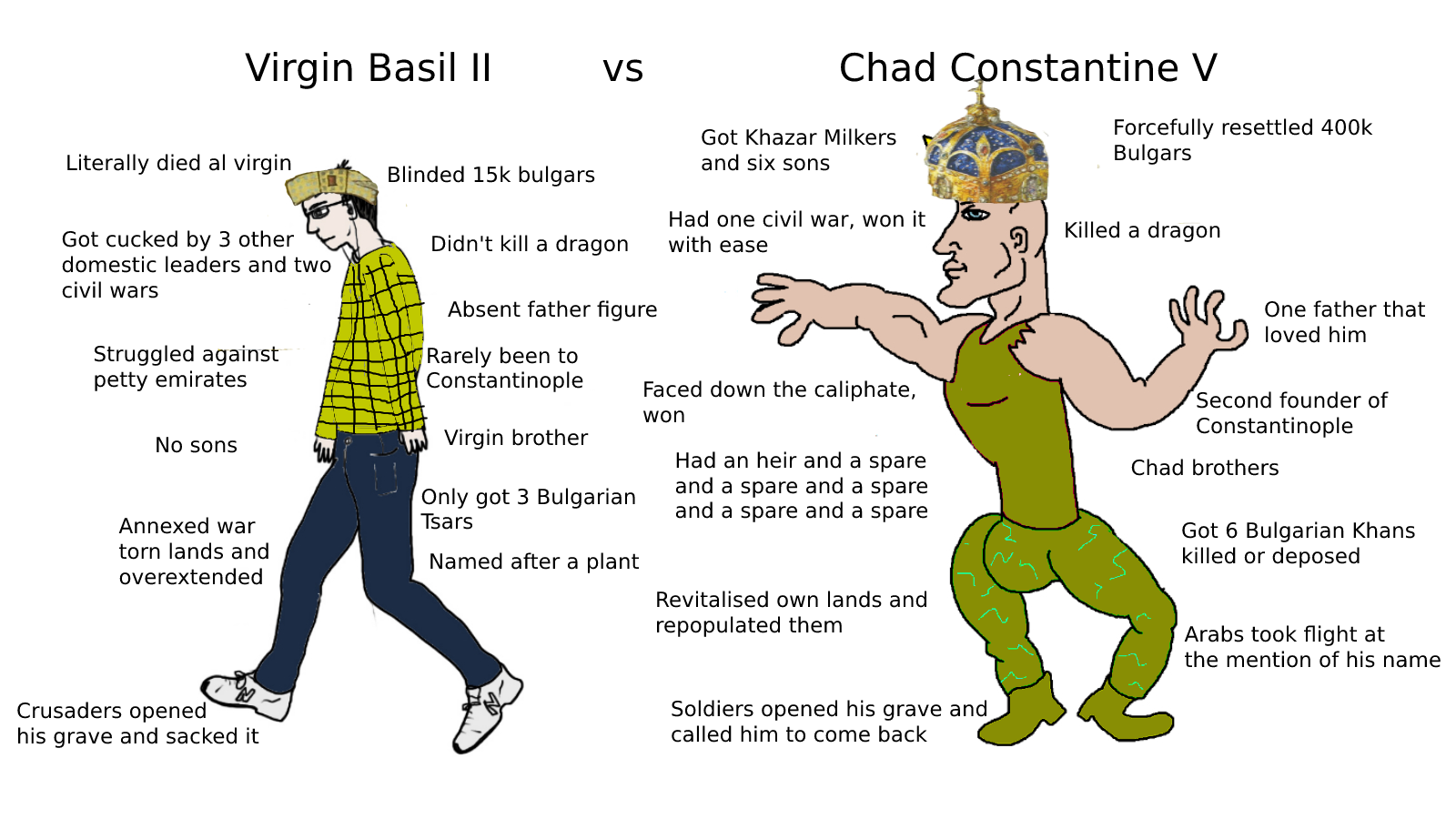
Watch this to learn more about Constantine V (Eastern Roman History).
Now in this story’s case, the events in history will play out quite but not so differently with Artavasdos as emperor and Constantine V out of the scene after 743. For Constantine V in this story’s case with Artavasdos winning the civil war, he would be paralyzed for life and would have to be confined to the Chora Monastery where in real history Artavasdos and his family were banished to, and in possibly only 2 years (by 745)- the possible date of Artavasdos’ death in real history too- Constantine V would die from his severe injury at only 27. His wife Tzitzak here would have to return to her native land of the Khazars like what Justinian II’s wife did back in 711, whereas in real history Tzitzak had died in 750 after giving birth to Constantine V’s first son Leo IV “the Khazar” who would succeed his father as emperor. With Artavasdos continuing his reign as emperor on the other hand, not so much would be different as compared to Constantine V’s reign in reality, except of course for the destructions of icons, and with Artavasdos fully reigning as emperor from 743 onwards, the icons previously destroyed under Leo III and Constantine V would all be put back in place and day and night, the people serving Anna’s resistance would put the icons right back in their rightful places and repaint those that were damaged by the years of Iconoclasm. Therefore with Artavasdos as emperor, there would be no Council of Hieria in 754, no persecutions, and no having to blind monks and nuns, and instead by some encouragement from Anna and her sisters who were strongly devoted to icons, Iconoclasm would be made illegal and the same Ecloga of Leo III would be updated with the part on Iconoclasm removed, and instead prohibiting it. As for the conflict with the Arabs, the same of course would happen with the Umayyad Caliphate’s power weakening so due to that, Artavasdos just as Constantine V did would also win a great number of victories against the Arabs in the east in 746, 747, and 752 also taking back Leo III’s hometown of Germanikeia. With Artavasdos staying as emperor though, things will only be different in the Byzantine world as outside it, things would still play out the same way as it did in real history so over with the Arabs, the Umayyad Caliphate would still be dissolved in 750 and be replaced with the Abbasid Caliphate, and over in Italy the ambitious Lombards would continue to expand and in 751 take over Ravenna as well. The fall of Ravenna to the Lombards that would end the Byzantine Exarchate meanwhile would still be inevitable due to the increasing power of the Lombards, so in this story’s case even with Artavasdos as emperor, the same would happen in Italy wherein Exarch Eutychius would still surrender Ravenna to the Lombards and afterwards disappear from the pages of history by fleeing to the new Republic of Venice never to be heard from again. Byzantine territory in Italy following the fall of Ravenna like in real history too would only consist of the southern regions and Sicily, as Rome was always asserting itself as independent anyway. However, since icons and icon veneration was now reinstated in Byzantium, the pope would therefore still remain loyal to Byzantium and its emperor Artavasdos also agreeing to still keep Rome under the Byzantines’ protection, therefore this would be a very major change if Artavasdos who favored icons stayed as emperor as with this happening, the pope would no longer have to turn to the Frankish Kingdom for support against the Lombards, but instead still to the Byzantines while the Republic of Venice too would still remain an ally to Byzantium whether the empire was Iconoclast or not. Back in the empire when it would come to reforming the Themes, Artavasdos would also do the same as Constantine V in limiting the power of the Opsikion Theme thus dividing it and making the other half divided out of it also as the Optimatoi Theme, as from his rebellion against Constantine V from 742-743, Artavasdos would realize from it despite being the one rebelling that this Theme was something that was causing trouble. In the process of breaking the Opsikion Theme in half too, Artavasdos would also do the same as Constantine V in real history in creating the new imperial elite force or the Tagmata that would be the emperor’s personal army in battle, and he too would assign them to the new Optimatoi Theme. Artavasdos though considering that he was way older than Constantine V when taking over the throne in 742 being 55 then would not rule as long as Constantine V in real history who ruled until 775, instead Artavasdos as I would put it would die by 759 at the age of 72 despite having begun Byzantium’s new war against the Bulgars in 755 just as Constantine V did in real history, though at his death Artavasdos would still leave the empire stronger than he had founded it, meaning Byzantium was more stable compared to how it was in 717 when Leo III with the help of Artavasdos took over the empire wherein the Arabs laid siege to Constantinople, though for defending and restoring icons, Artavasdos would be made a saint too after his death in this story’s case. Following Artavasdos’ death, the elder son Niketas then would be the senior emperor though his younger brother Nikephoros having already been crowned co-emperor will still stay co-emperor. It would then be in the reign of Niketas and Nikephoros as co-emperors that the Byzantine-Bulgarian war would go on, and just as it went in favor for Constantine V and Byzantium in real history, I would also say the same thing for Niketas and Nikephoros’ Byzantium wherein they would also score major victories over the Bulgars. Now we have come to the big question which is what if Artavasdos succeeded in defeating Constantine V and stayed as emperor, and would this do a lot of change to the course of the Byzantine history? Well, the answer to this is not very simple but also not very complex. In the short-term, not a lot of changes would happen to the Byzantine Empire in its geography or political situation as after Artavasdos’ death in this story’s case which would be in 759, the Byzantine Empire would still be the same in size and power as it was in real history by this time wherein it was ruled by Constantine V, therefore Asia Minor would still be the heartland where all the Themes and the empire’s army came from, and though powerful the armies would still not be that powerful enough to relive the conquests of Justinian I in the 6th century, thus there would be no more chance to take back Italy and North Africa again. In the long-term things may be favorable for Byzantium if Artavasdos survived in power as considering the popes in Rome always opposed the Byzantines’ policy of Iconoclasm and with Artavasdos supporting the icons, then the Byzantine emperor as well as the Church of Constantinople would still be in good terms with the Church of Rome, therefore this will change a lot of things in the long-term for the turbulent relations between the pope and Byzantium. With icons reinstated earlier enough in Byzantium, then Byzantium’s relationship with the pope would not be fractured that much, therefore the pope would no longer have to ally with the Frankish Kingdom of Pepin I, and Rome rather than later on becoming an independent state known as the Papal States would still remain under the rule of the Byzantine emperor except with some autonomy under the pope, and in the centuries to come if Byzantium remained in good terms with the pope if icons were reinstated earlier on, then possibly there would be no Great Schism later on in 1054 where the final division between the Eastern and Western Churches happened, and possibly no tensions between the Byzantines and the Crusaders by the time the 11th century ends, and lastly with Byzantium and the pope still good terms, there may even be no bloody 4th Crusade later on in 1204 that almost ended the Byzantine Empire. Of course, Iconoclasm in Byzantium did not go on forever as in 787 the empress regent Irene, the daughter-in-law of Constantine V called for a Church Council that put an end to it temporarily, although by 815 Iconoclasm made a comeback under Emperor Leo V (r. 813-820), but in 843 with another Church Council led by the empress regent Theodora, Iconoclasm came to a full stop, therefore this also shows women were strongly devoted to icons.


And now I have come to the very end of chapter V of my Byzantine Alternate History series, but before finishing I would like to share my thoughts on this era and creating this kind of dystopian Byzantine story with a mix of family drama and more. First of all, this era in Byzantine history being the 8th century is the part of Byzantine history I am not very much interested in as most of the conflicts except for the epic Arab Siege of 717-718 were mostly internal such as Iconoclasm, while the empire was also at its lowest point, and not so much too was recorded on this era, which is why it is often called the “Byzantine Dark Ages”. However, despite not being so interested in this era and having not so much recorded about it, I started to think that this was the best era to experiment by adding more fictional elements especially in creating a bit more of a fictional twist with the personalities and stories of historical figures who aren’t so much documented in real history like Artavasdos and Anna as well as Constantine V, except here since this story is in favor of the Iconodules or icon supporters, I made Constantine V look like the same kind of villain Iconodule historians like Theophanes the Confessor describe him as, although just to make the story in favor Artavasdos more, I kind of had to embellish Constantine V’s villainous personality as someone more sadistic, deranged, envious, and decadent than what he actually was in reality. In addition, since there are not so many conflicts in this era for Byzantium to go so much into detail about, I also wanted to use this chapter as my chance to experiment more when writing about Byzantium by adding in some more family drama, intimate romance, wild partying scenes, a bit on Byzantine fashion and art, the origins of Constantine V’s title as the “shit-named”, the story of Leo III originally being Konon which was another Byzantine rags to riches story, a totally made up scenario of Constantine V being kicked off the walls by Artavasdos which was in fact a scene inspired by the season 2 finale of Cobra Kai, and a dystopian angle which was overall this story’s genre considering the whole issue on Iconoclasm and how it became a law in the empire. As for Artavasdos, this was the most interesting part for me to write about as he is possibly Byzantium’s least known emperor but indeed was an emperor even if ruling so short and having quite an unusual name for a Byzantine emperor, and no matter how insignificant he may seem he may have actually had a great impact on Byzantine history in the long term if he stayed in power, as he supported icons and with Iconoclasm being one the major reasons for the permanent and bitter schism between Byzantium and the west, then this schism in the long-term may not be so great in scale if it so happened that Iconoclasm ended earlier under Artavasdos rather than in real history when it went on for about a century more with a small break in the middle (787-815). Of course, this story also had to include Justinian II’s first (685-695) and second (705-711) reigns, the 22-Year-Anarchy period (695-717), the complete loss of Byzantine North Africa, and Leo III’s reign (717-741) as a way to give some background to the situation of 8th century Byzantium as this 22-Year-Anarchy period was put here to show how bad the situation for Byzantium was setting the stage for the cruel 8th century while the first 2/3 of this story with Leo III’s reign and the Arab Siege of Constantinople from 717-718 was definitely important as way to set the stage for the foundation of Iconoclasm and for the conflict between Constantine V and Artavasdos in the climax. Now lastly, I also want to talk a bit about Byzantine Iconoclasm here and even though in its time it was popular among many and seemed to be what could have saved the empire from almost falling apart considering the reigns of the Iconoclast emperors Leo III and Constantine V were successful ones, it was also as I would say a waste of time for the Byzantines that really had no purpose and scientific or logical reason and was rather all based on superstition, as when they could have used this time to possibly fix their relationship with the pope and therefore with the rising Western European kingdoms which in turn could have strengthened Byzantium in totally turning the tide of war against the Arabs in the east or the Bulgars in the north, instead the Byzantines wasted their time in the internal issue of Iconoclasm, and even though the empire would live longer beyond Iconoclasm vanished, it still ruined their relations with the pope and the west, thus in the long-term Iconoclasm was one of the driving factors for the downfall of Byzantium. Of course back then, without much science to explain things, people would turn to the most stupid of things such as destroying icons thinking it would save them without knowing it would do more harm than good. Overall, as I finish this chapter I have to realize that it was a very hybrid kind of story with the Arab-Byzantine wars fused together with a modern-era dystopian angle, religious controversies, family drama, romance, decadence, sex, and very little details that are too less important for history to mention, and this was the whole purpose for writing this chapter in particular, which was to show a more personal and emotional touch in retelling the rich and fascinating history of Byzantium, and of course I would have to thank my friend Mario for helping me here in creating the littlest details for this story found here and there. Of course, here in the 8th century, no matter how far this may have been from the time of the Roman Empire, the Byzantine Empire was still the Roman Empire in name and politics despite its culture now drastically shifting to Greek, yet here the dystopian story of the Byzantine Dark Ages does not yet end as the next chapter will continue the story of Byzantine Iconoclasm ending in 787 and how Byzantium will react to the birth of a new empire in the west that will come to challenge their authority.

Up next in chapter VI of Byzantine Alternate History, the story from this chapter on Artavasdos staying in power will not continue, though the next chapter will start off not too long after this one finished off which means some characters including Constantine V- but this time like in reality staying power- will return and here, the period of Iconoclasm in Byzantium would come to an end with Empress Irene but at the same time, Byzantium will face the rise of the new Frankish Empire of Charlemagne in 800 that had come to challenge the authority of the weakened Byzantine Empire, but if Irene and Charlemagne were to marry, then possibly it would be one of the biggest what ifs in world history, thus with this marriage Europe could once again become a super-empire almost as large as the Roman Empire of old. Well, this is all for chapter V of Byzantine Alternate History, this is Powee Celdran, the Byzantine Time Traveller… thank you for your time!
Next Story: Byzantine Alternate History Chapter VI- 9th Century






3 thoughts on “Byzantine Alternate History Chapter V- Emperor Artavasdos, the Unlikely Hero of the 8th Century”